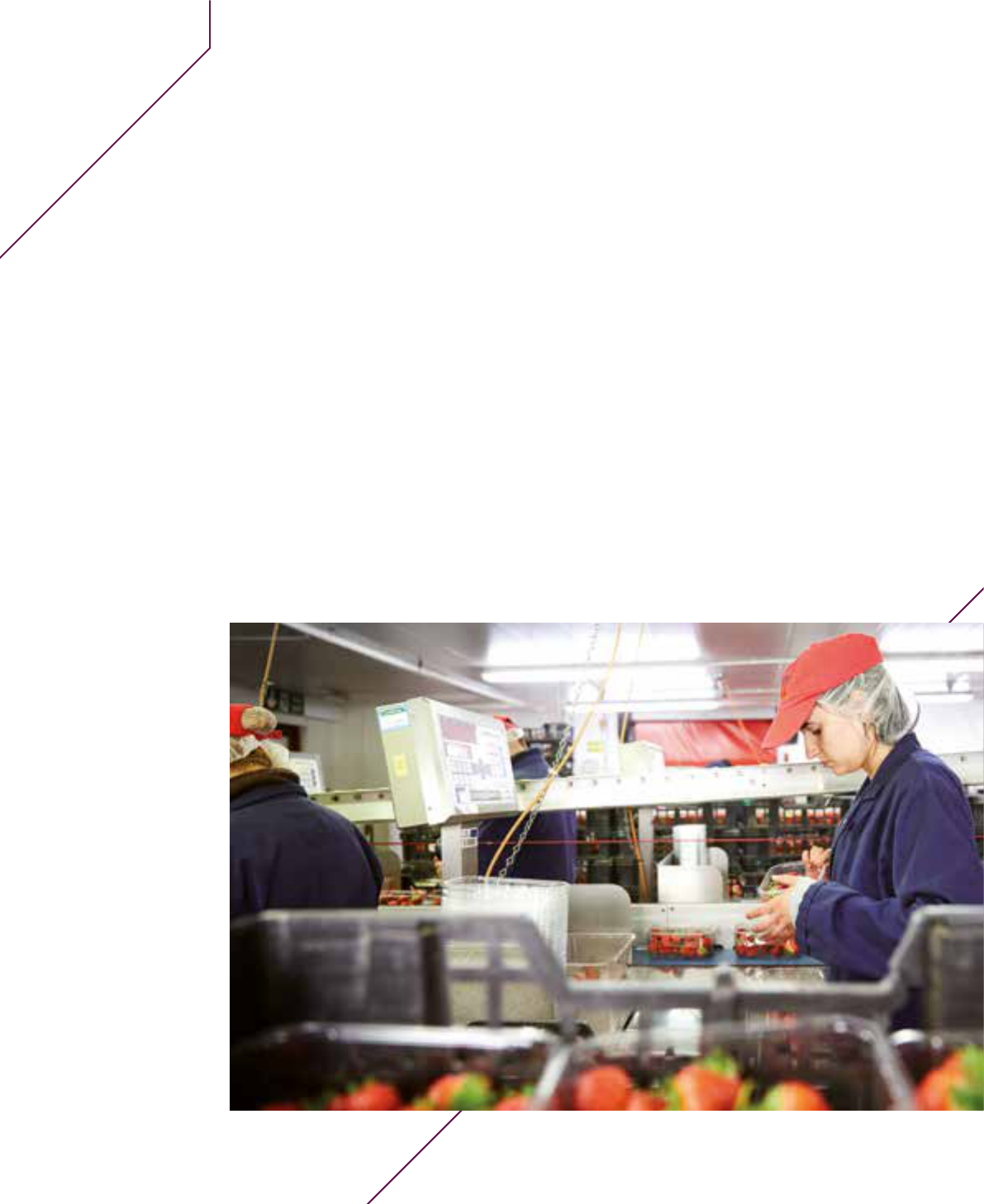
Trade obstacles
to SME participation
in trade
Section D investigates the major trade-related impediments to
SMEs’ participation in trade. A key finding in this section is that all
types of trade costs, whether they are fixed or variable, adversely
affect the ability of SMEs to participate in trade, to a greater extent
than large enterprises. Since SMEs are more sensitive to trade
barriers than large firms, removing obstacles to trade benefits SMEs
disproportionately. It is therefore important to understand what
these major obstacles are.
D

Contents
1. SME perceptions of barriers to access international markets 78
2. Trade policy and SMEs 83
3. Other major trade-related costs 91
4. ICT-enabled trade: benets and challenges for SMEs 98
5. SME access to GVC-enabled trade 102
6. Conclusions 106
Some key facts and findings
•• Tariffs•and•non-tar iff•restrictions•af fect•the•ability•to•participate•in•trade•of•
SMEs•more•adversely•than•that•of•la rge•enterprises.•
•• Trade•facilitation•promotes•the•entry•of•SMEs•into•export•markets.•Small•
expo rting•firms•profit•relatively•more•when•trade•facilitation•improvements•
relate•to•information•avail ability,•advance•rulings•and•appea l•procedures.
•• Services•SMEs•are•relatively•m ore•impacted•by•barriers•on•“establishment”•
than•by•barriers•on•“operations”,•notably•when•these•concern•mode•4•trade.
•• Logistics•tend•to•cost•more•for•SMEs•than•for•large•enterprises.•For•example,•
in•Latin•America,•domestic•logistics•costs•can•add•up•to•more•t han•42•per•
cent•of•total•sa les•for•SMEs,•a s•compared•to•15-18•p er•cent•for•large•firms.•
•• SMEs•face•more•credit•rationing,•higher•“screening”•costs•and•higher•interest•
rates•th an•larger•enterprises.•SMEs•are•also•the•most•credit•c onstrained.•It•is•
est imated•that•half•of•their•requests•for•trade•finance•are•re jected,•compared•
to•only•7•per•cent•for•multination al•corporations.
•• The•benefits•from•the•ICT•revolution•are•particularly•high•for•SMEs.•However,•
there•are•some•unique•costs•of•online•trade,•such•as•the•costs•of•access ing•
ICTs•and•the•need•for•certainty•and•pr edictability•in•regimes•governing•global•
data•transfers.•Small•f irms•in•LDCs•only•attain•22•per•cent•of•the•conn ectivity•
score•of•large•firms•in•LDCs,•compared•to•64•per•cent•in•developed•
countries.•
•• GVCs•help•SMEs•to•overcome•some•of•the•difficulties•they•face•in•accessing•
intern ational•markets.•However,•l ack•of•skills•and•technology,•together•with•
poor•access•to•finance,•logistics•and•in frastructure•costs•and•regulatory•
uncertainty•make•it•difficult•for•SMEs•to•partic ipate•in•GVCs.

WORLD TRADE REPORT 2016
78
Section D.1 identifies the obstacles to trade that
firms perceive as major challenges for their access to
international markets.
1
Sections D.2 and D.3 provide a
sense of the magnitude of these barriers to trade and
their effects on SMEs, looking at tariff and non-tariff
barriers and other trade-related barriers, respectively.
Sections D.4 and D.5 explain how SMEs can overcome
some of these barriers through trade, particularly
online trade and global value chains (GVCs). These
subsections also explore the obstacles faced by SMEs
as they exploit the opportunities offered by online trade
and GVCs to access international markets.
1. SME perceptions of barriers to
access international markets
One way to get a sense of the main obstacles to trade
for SMEs is through survey data. The United States
International Trade Commission (USITC), the European
Commission, the World Bank, the International Trade
Centre (ITC) and the Organisation for Economic
Co-operation and Development (OECD), in conjunction
with the WTO, have conducted a number of surveys that
allow firms to be classified by their size. The results of
these surveys help to identify some of the SME-specific
obstacles that are explored in this chapter.
It is important to stress at the outset that the results of
surveys are very sensitive to the design of the survey
itself. A survey designed to identify trade costs should
typically ask the firm surveyed to indicate what costs,
out of a predefined set of options, the firm perceives
as a major obstacle to trade. If a cost is not included
in the predefined multiple choice set of costs, it will
not appear as a major trade cost. For this reason,
different surveys are not really comparable. However,
ranking the listed trade costs in each survey may still
help to understand which trade costs are the most and
the least significant for firms, and, more importantly
for the purpose of this report, which trade costs are
relatively more important for SMEs relative to large
enterprises.
Most of the information on obstacles to trade as
perceived by SMEs in developing countries does not
allow a comparison between the relative importance
of obstacles to trade between small and large firms,
because studies tend to focus on SMEs only.
2
One
notable exception is the series of business surveys on
non-tariff measures (NTMs) undertaken by the ITC,
3
which suggests that SMEs are more affected by NTMs
than large firms.
All these studies point us to some of the major perceived
obstacles to trade. Table D.1 offers a review of selected
empirical investigations conducted in developing
countries. The main obstacles to international trade
emerging from this review are:
(i) limited information about the working of the foreign
markets, and in particular difficulties in accessing
export distribution channels and in contacting
overseas customers;
(ii) costly product standards and certification
procedures, and, in particular, a lack of information
about requirements in the foreign country;
(iii) unfamiliar and burdensome customs and
bureaucratic procedures; and
(iv) poor access to finance and slow payment
mechanisms.
In order to get a sense of the relative importance of
the obstacles to trade for small and large firms in
developing countries, the database of the Fourth
Global Review of Aid for Trade (OECD and WTO,
2013) is used. This survey looks at a slightly different
question: that is, obstacles to enter and move up value
chains rather than the obstacles to trade. However,
as discussed in Section B, internationalization of
SMEs mostly takes place through indirect channels,
through the contribution that SMEs make to exports
as upstream producers in value chains. Direct exports
are almost exclusively done by large firms. In developed
and developing countries alike, the top 5 per cent of
firms account on average for 80 per cent of exports.
Therefore, the perceived obstacles to participating in
a supply chain provide important clues into the more
general question of what are the major obstacles to
trade.
Table D.2 reports the ranking of the major obstacles
to enter and move up value chains as perceived by
interviewed firms by sectors. In the OECD and WTO
(2013) publication, a survey of 122 questions was
completed by 524 firms and business associations in
developing countries, presenting the binding constraints
these firms face in entering, establishing or moving up
value chains.
4
In addition, 173 lead firms, mostly from
OECD countries, also completed the questionnaire
to highlight the obstacles they face in integrating
developing country firms into their value chain.
5
The questionnaire focused on businesses integrated
into value chains in five key sectors: agrifood,
information and communication technology (ICT),
textiles and apparel, tourism, and transport and
logistics.
6
The original questionnaire divided responses
into five categories: micro firms with less than 10
employees; small firms, with 10 to 49 employees;
medium-sized firms, with 50 to 250 employees; large

79
D. TRADE OBSTACLES
TO SMEs’ PARTICIPATION
IN TRADE
LEVELLING THE TRADING FIELD FOR SMES
Table D.1: A review of export barriers as emerging in selected studies on developing countries
Ethiopia Iran Jordan Mauritius Nigeria Sri Lanka
Lakew and Chiloane-
Tsoka (2015)
surveyed nine SMEs
based in Addis Ababa
producing leather
and leather products.
Kabiri and
Mokshapathy (2012)
surveyed 76 SMEs
producing fruit and
vegetables in Tehran.
Al-Hyari et
al.(2012) surveyed
135 Jordanian
manufacturing SMEs.
Dusoye et al.(2013)
surveyed 41
SMEs exporters in
Mauritius.
Okpara (2009)
surveyed 72
manufacturing SMEs
in Nigeria
Gunaratne (2009)
undertook a postal
questionnaire survey
of SMEs in Sri Lanka.
MAJOR TRADE BARRIERS
– Lack of finance
– Tariff and non-
tariff barriers
– Unfamiliar with
export procedures
– Slow collection
of payment from
abroad
– Foreign
distribution
– Complex export
document
– Political instability
in foreign markets
– Foreign exchange
rate
– Exporting
procedures/
documentation
– Communication
with foreign
customers
– Collection of
payments from
abroad
– Export restrictions
– Political instability
in foreign markets
– Tariff and
non-tariff barriers
– Unfamiliar foreign
business practices
– Sociocultural
differences
– Language
– Lack of
information on
foreign market
– Distribution
channels
– Logistic cost
– Transportation
costs
– Government
regulations and
rules
– Foreign rules and
regulations
– Collection of
payments from
abroad
– Cost of capital to
finance export
– Foreign currencies
risk
– Insufficient
information about
overseas markets
– Currency
fluctuations
– High
transportation cost
– Cost of
establishing an
office abroad
– Currency
fluctuations
– Lack of finance
– Government
bureaucracy
– Obtaining
reliable foreign
representation
– Exchange rate
policies
– Lack of export
market knowledge
– Lack of export
finance
– Difficulty in
handling export
documentation
requirement
– Transportation and
insurance costs
– Language
differences
– Lack of finance
– Corrupt
bureaucratic
practices in the
home country
– Tariff and non-
tariff barriers
– Language
– Lack of reliable
data on foreign
market
– Difficulty in
managing
advertising and
promotion
OECD and APEC countries ALADI countries CBI
7
Export Coaching Programmes
OECD (2008) surveyed 978 SMEs’ perception
of the barriers to their internationalization
across 47 countries.
A report by the OECD (2005) presents the
findings of a study on 30 SMEs in 12 ALADI
(Asociación Latinoamericana de Integración
– Latin American Integration Association)
countries on the barriers to accessing
foreign markets perceived by firms in ALADI
countries.
Vonk et al. (2015) evaluated five of CBI’s
Export Coaching Programmes (ECPs).
These programmes aim to increase exports
from developing countries into Europe. The
evaluation was conducted through interviews
and questionnaires submitted to selected
SMEs. Thirty-three responses were received
(24 were Indian firms) indicating “the most
important reason for not exporting (more) to
the EU”.
TRADE BARRIERS
– Identifying foreign business opportunities
– Limited information with which to locate/
analyse markets
– Inability to contact potential overseas
customers
– Obtaining reliable foreign representation
– Lack of managerial time to deal with
internationalization
– Inadequate quantity of personnel and/or
untrained personnel for internationalization
– Excessive transportation costs
– Lack of information and requirements
– Customs and bureaucratic procedures
– Finance and payment mechanisms
– Non-tariff barriers
– Transportation: costs, frequency, and
insecurity; inadequate logistics
– Marketing regulations and regional
agreements
– SPS and heterogeneous technical
measures
– Asymmetric physical and technological
infrastructure of countries
– Political and economic instability
– Subsidies
– Lack of business contact
– Lack of market information
Notes: These studies looked at obstacles to trade both internal and external to the firm, the table however only reports trade barriers. For example,
difficulty in obtaining information on rules and regulations in a foreign market is a barrier to export because it involves extra costs that the firms
have to meet in order to export. Lack of personnel to look into the rules and regulation in the foreign market is an internal problem of the firm.

WORLD TRADE REPORT 2016
80
firms, with more than 250 employees; and multinational
firms, with more than 250 employees and operating
in more than one country. In Appendix Figures D.1-3,
the survey data from large and multinational firms is
combined and presented as “large firms” whereas
“MSMEs” represents the combined data from micro,
small and medium-sized firms.
A c c e s s t o f i n a n c e a n d t r a d e f i n a n c e , l a c k o f t r a n s p a r e n c y
in the regulatory environment and customs paperwork,
and delays are among the major obstacles to enter
and move up the value chains for SMEs in developing
countries. Certification costs for SMEs in agriculture
and inadequate telecommunication networks in ICT
also prevent SMEs from entering supply chains and
upgrading.
Figures D.1 and D.2 show the main perceived obstacles
to trade in manufacturing and services based on a
survey of US firms (USITC, 2010). The questionnaire
concerning the leading impediments to engaging
in global trade employs a stratified random sample
to survey more than 8,400 US firms. The results are
weighted on the basis of the proportion of firms in the
overall population and the response rates of various
categories of firms. Firms with between 0 and 499
employees in the United States are categorized as
SMEs whilst those with 500 or more employees are
categorized as large firms. Responding firms rated the
severity of 19 impediments on a 1-to-5 scale, with 1
indicating no burden and 5 indicating a severe burden.
Figures D.1 and D.2 show responses of 4 or 5 on the
1 to 5 scale, illustrating the share of SMEs and large
firms rating impediments as burdensome.
8
Interestingly, access to a foreign country’s distribution
network is perceived as the major obstacle by US
SMEs in the manufacturing sector. Conversely, this is
perceived as a relatively minor obstacle by large firms.
Similarly, high tariffs and difficulties in accessing
finance and processing payments appear to be
relatively more important obstacles for SMEs’ trade
than for large firms’ trade.
In the services sector, US SMEs reported insufficient
IP protection as the major obstacle to export. For
example, exporters of film and television programming
reported that seeking remedies to IP infringement was
often too expensive for SME producers (Independent
Film & Television Alliance, 2010).
Figure D.3 from the European Commission’s
Report Small and Medium Sized Enterprises and the
Transatlantic Trade and Investment Partnership reports
the main obstacles to trade for EU firms exporting to
the United States (European Commission, 2014b). The
figure presents the results of an online survey of 869
European companies carried out with the support of
the Enterprise Europe Network from July 2014 until
January 2015.
The companies were asked whether they felt they
faced barriers in the US market and to identify the
nature of those barriers based on a standard list of
non-tariff measures. The respondents included micro
firms employing one to nine people, small firms with
10 to 50 employees, medium-sized firms with 51 to
250 employees, and big firms with more than 250
employees. This survey provides a broad view of the
issues that are most important for SMEs, such as
compliance with regulation and standards, customs
procedures, and restrictions on the movement of
people and of distribution channels. It also suggests
that many of these issues represent larger barriers for
SMEs than for larger firms, given that small companies
have to spread fixed costs of compliance over smaller
revenues than those of larger firms.
Regulations, i.e. sanitary and phytosanitary (SPS)
and technical barriers to trade (TBT) measures, are
perceived to be the most important obstacle to trade
for all firm sizes. More than 50 per cent of firms
Table D.2: SMEs’ top five perceived constraints in entering, establishing or moving up
value chains
Agriculture ICT Textile
Access to business finance
Transportation costs
Certification costs
Access to trade finance
Customs paperwork and delays
Access to trade finance
Lack of transparency in regulatory
environment
Unreliable and/or low band internet access
Inadequate national telecommunications
networks
Customs paperwork or delays
Access to trade finance
Customs paperwork or delays
Shipping costs and delays
Supply chain governance issues
(e.g. anti-competitive practices)
Other border agency paperwork or delays
Note: The specific question for Agriculture, ICT and Textile sectors is: “What difficulties do you face in entering, establishing or moving up the value
chains? Please select up to 5 from the following list.”
Source: OECD and WTO (2013).
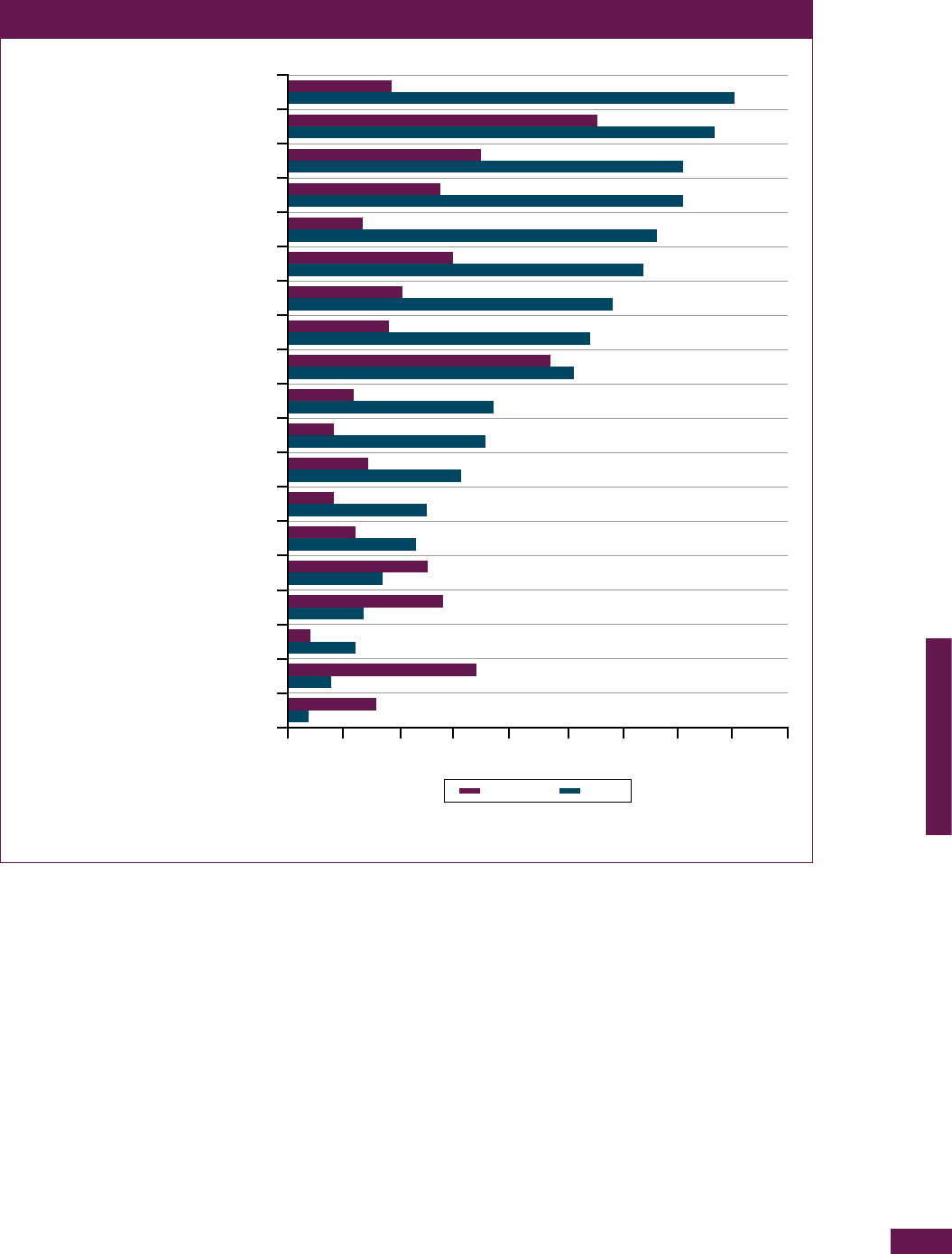
81
D. TRADE OBSTACLES
TO SMEs’ PARTICIPATION
IN TRADE
LEVELLING THE TRADING FIELD FOR SMES
identified regulation as the main obstacle to accessing
foreign markets. Border procedures are next with 30
to 40 per cent of SMEs. Price, licences and quantity
controls, as well as measures on competition are next
with 20 to 30 per cent of SMEs perceiving these to
be major barriers to access the US market. These
measures are also relatively more important obstacles
for SMEs than for large firms. Interestingly, standards
and regulations are also listed by US SMEs as major
trade barriers for accessing the EU market according to
USITC (2014). The report highlights that the different
regulatory approaches, the lack of participation of US
firms in development of EU standards, and the costs
of compliance with standards and procedures, as well
as the lack of national treatment of US certification
bodies, are all significant barriers encountered by the
US SMEs.
In sum, drawing from the existing evidence, the costs of
accessing a foreign distribution network, transportation
costs, high tariffs, access to finance and trade finance,
customs procedures, and foreign regulations, both in
goods and in services, appear to be the major obstacles
to trade for SMEs. The next subsections will explore
in more depth the reasons why these costs matter
particularly for SMEs and how e-commerce and
participation in GVCs can help to overcome some of
these costs.
Figure D.1: Leading impediments to engaging in global trade in manufacturing, US firms survey
Unable to find foreign partners
Transportation/shipping costs
Preference for local goods in foreign market
High tariffs
Difficulty in receiving or processing payments
Obtaining financing
Lack of government support programs
Customs procedures
Foreign regulations
Difficulty establishing affiliates in foreign markets
Language/cultural barriers
Lack of trained staff
US taxation issues
Difficulty locating sales prospects
Foreign sales not sufficiently profitable
Insufficient IP protection
Visa issues
Foreign taxation issues
US regulations
Large firms SMEs
0.00 0.05 0.10 0.15 0.20 0.25 0.30 0.35 0.40
0.45
Source: US International Trade Commission (2010).
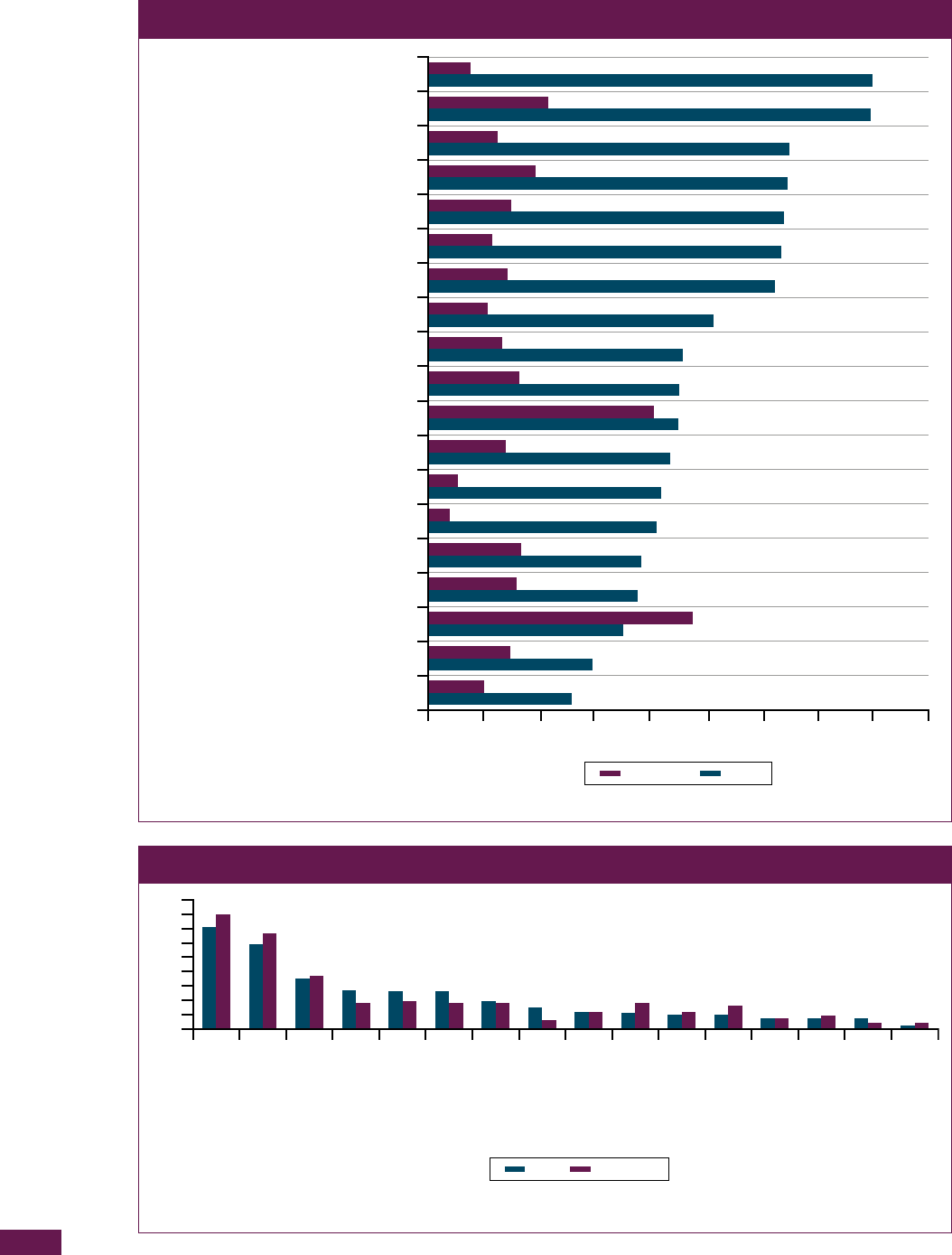
WORLD TRADE REPORT 2016
82
Figure D.2: Leading impediments to engaging in global trade in services, US firms survey
Insufficient IP protection
Foreign taxation issues
Obtaining financing
Foreign sales not sufficiently profitable
US regulations
Difficulty establishing affiliates in foreign markets
Difficulty in receiving or processing payments
Language/cultural barriers
Visa issues
High tariffs
Foreign regulations
Transportation/shipping costs
US taxation issues
Lack of government support programs
Unable to find foreign partners
Preference for local goods/services in
foreign market
Difficulty locating sales prospects
Lack of trained staff
Customs procedures
Large firms SMEs
0.0 0.1 0.2 0.3 0.4 0.5
0.6
Source: US International Trade Commission (2010).
Figure D.3: Trade barriers in accessing US goods markets reported by EU firms by firm size
0%
10%
20%
30%
40%
50%
60%
70%
80%
90%
SPS measures*
TBT measures
Border procedures
Price-control measures
Licences and quantitative
controls (including quotas)
Measures on competition
Finance measures
Distribution restrictions
Intellectual property
Export-related measures
Government procurement
restrictions
Rules of origin
Restrictions on post-sales
Subsidies
Anti-dumping, countervailing
and safeguards
Investment measures
SME Large firms
*Only for exporters of food, drink, animal feed and products that come into contact with food (e.g. packaging, cooking utensils).
Source: Authors’ calculation based on European Commission (2014b).

83
D. TRADE OBSTACLES
TO SMEs’ PARTICIPATION
IN TRADE
LEVELLING THE TRADING FIELD FOR SMES
2. Trade policy and SMEs
This subsection looks at tariff and non-tariff obstacles
to trade, their magnitude and their effects on SME
participation in trade in goods. It also discusses
barriers that may be particularly burdensome for SMEs
operating in the service sector.
(a) Tariff barriers may matter more
for SMEs
As shown in Figure D.1, SMEs in the manufacturing
sector consider high tariffs to be a greater obstacle
to exporting than large manufacturing firms do. What
explains this perception?
One explanation is the effect that higher tariffs have
on the participation of SMEs in trade. Higher tariffs
in destination markets make it more difficult for firms
to profitably export. Only the more productive firms
will export in such an environment, whilst smaller and
less productive firms will not. As tariffs are reduced,
smaller firms progressively enter in the market. Using
firm-level information for Ireland, Fitzgerald and Haller
(2014) estimate that reducing tariffs from 10 per cent
to zero increases participation of medium-sized firms
(firms with 100-249 employees) from 11.5 per cent to
14.2 per cent. But they do not find significant effects
on firms of smaller size.
A second explanation is provided by the effect that
higher tariffs have on the volume of exports of a firm.
A growing body of theoretical literature emphasizes
how the impact of trade policy depends on firm
characteristics such as size and productivity.
9
Small
firms are more sensitive to tariff changes because
they produce goods whose demand is more sensitive
to price changes or they pay lower costs to reach
additional consumers than large firms (see Box D.1 for
a more detailed explanation).
Heterogeneous effects of tariffs across firms of
different sizes can also be explained by the presence
of non-ad valorem tariffs. Specific tariffs (per unit
tariffs) and tariff rate quotas (through the imposition
of a quota licence price) act as additive trade costs,
that is a cost that is independent of the unit price of
the good. An additive trade costs has systematically a
different impact between firms that produce low-priced
and high-priced good. Clearly, adding a US$ 1 tariff on
a good for which the price is US$ 1 is a much more
restrictive measure than adding US$ 1 tariff on a good
for which the price in the market is US$ 100. If low-
priced firm are small firms, the prevalence of additive
trade costs can also explain the perceived importance
of high tariffs as barriers to trade for small firms
(Irarrazabal et al., 2015).
10
A third explanation behind small firms’ perception that
tariffs affect them disproportionately could actually be
that there is an anti-SMEs-bias in conditions of market
access. That is, SMEs face higher tariffs on average in
their export market destinations than large firms, and
this is why SMEs perceive tariffs to be a major barrier
to trade. Political economy provides some arguments
that explain this potential outcome.
In a world where governments negotiating agreements
are influenced by strong lobbying powers, large firms
Box D.1: Firms’ responses to higher tariffs
Spearot (2013) explains the differential effects across firms of a given tariff increase (reduction) with the fact
that firms face different demand elasticities. In particular, low revenue goods exhibit a higher demand elasticity.
For this reason, the traditional negative effect of higher trade costs on trade flows is amplified for low-revenue
varieties (firms with a low value of exports prior to the new restrictive measure).
11
The opposite is true when
tariffs are cut. In fact, Spearot finds that after 1994, following the Uruguay Round, for the same tariff cut, US
imports of low revenue varieties increased disproportionally more than imports of high revenue varieties. In some
cases, imports of high revenue varieties fall after liberalization.
Another study (Arkolakis, 2011) explains the differential impact of higher tariffs between small and large firms
on the basis of differences in market penetration costs. Paying higher costs allows firms to reach an increasing
number of consumers in a country. But the cost of reaching more consumers increases when a firm has already
reached a high volume of sales. That is, reaching more and more consumers becomes increasingly more difficult.
In this set-up, all firms lose from an increase in tariffs, but firms differ in their supply response depending on the
costs they face in reaching more consumers. These additional costs are large for large firms and small for small
firms. Exports of small firms grow more following tariff liberalization than do those of large firms, because small
firms face lower costs than large firms to reach additional consumers; and vice versa, large firms respond less to
tariff increases, because for each unit of export reduction they save more than small firms in terms of the costs
to reach consumers.
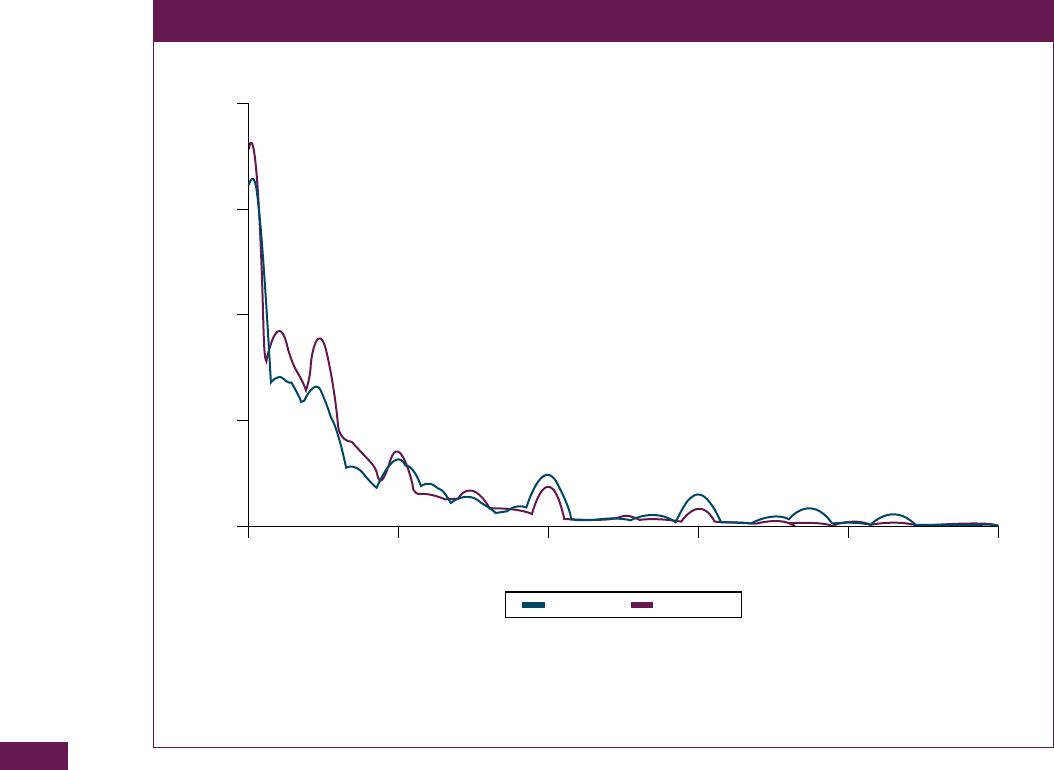
WORLD TRADE REPORT 2016
84
are more likely to engage in lobbying than small firms.
Large firms have more resources and are better able
than SMEs to engage in lobbying. Moreover, sectors
with few large firms are likely to be more effective
than sectors with many small firms in influencing trade
policy outcomes. Therefore, a country’s sectoral tariff
profile is likely to depend on the size of firms in that
sector. While in a unilateral set-up, this would lead
to higher tariffs in sectors dominated by large firms
(Olson, 1965; Bombardini, 2008), when tariffs are set
in a cooperative environment, export–oriented large
firms will lobby for trade liberalization and will succeed
in lowering tariffs (Plouffe, 2012).
12
Therefore, to the
extent that large firms are present in the same sectors,
they are likely also to face lower tariffs.
Available data does not allow for a systematic
assessment of tariffs faced by individual firms in their
destination market. Ideally, in order to calculate the
average tariff faced by small firms, one would need to
know what product small firms export in each market
and average the tariff faced across markets. This type
of data is not publicly available for all countries.
To get a sense of the tariffs firms face in their export
markets, Figure D.4 shows the distribution of tariffs
faced by French manufacturing exporting firms.
Interestingly, the figure shows that (i) the bulk of both
small and large firms exporting manufacturing goods
from France face tariffs lower than 10 per cent, and that
(ii) small firms are more concentrated in sectors facing
relatively higher tariffs (the blue line is above the red line
in the figure), while large firms are more concentrated
in sectors facing relatively lower tariffs. The difference
between tariffs faced by small and large firms in France
is not all that large and, as discussed in Section C,
causality may be reversed. That is, it may actually be
the case that firms operating in sectors facing lower
tariffs grow faster. Nevertheless, these findings do
raise the question of the potential importance for some
countries to look at whether tariffs faced by firms in the
export market are particularly harsh for SMEs.
One can attempt to get a sense of a potential anti-SMEs
bias in tariff profiles for a large sample of countries
using firm-level trade flows from the OECD’s Trade by
Enterprise Characteristics (TEC) database. However,
Figure D.4: French firms’ distribution by size and tariff faced in the exporting country
Density
Tariff (log scale)
20
15
10
5
0
0 .1 .2 .3 .4 .5
Small firms Large firms
Note: Small firms are defined as firms falling below the 25
th
percentile in terms of their volume of exports. Large firms are those with a volume
of export above the 7
th
percentile.
Source: Extracted from background work in Fontagné et al. (2016).
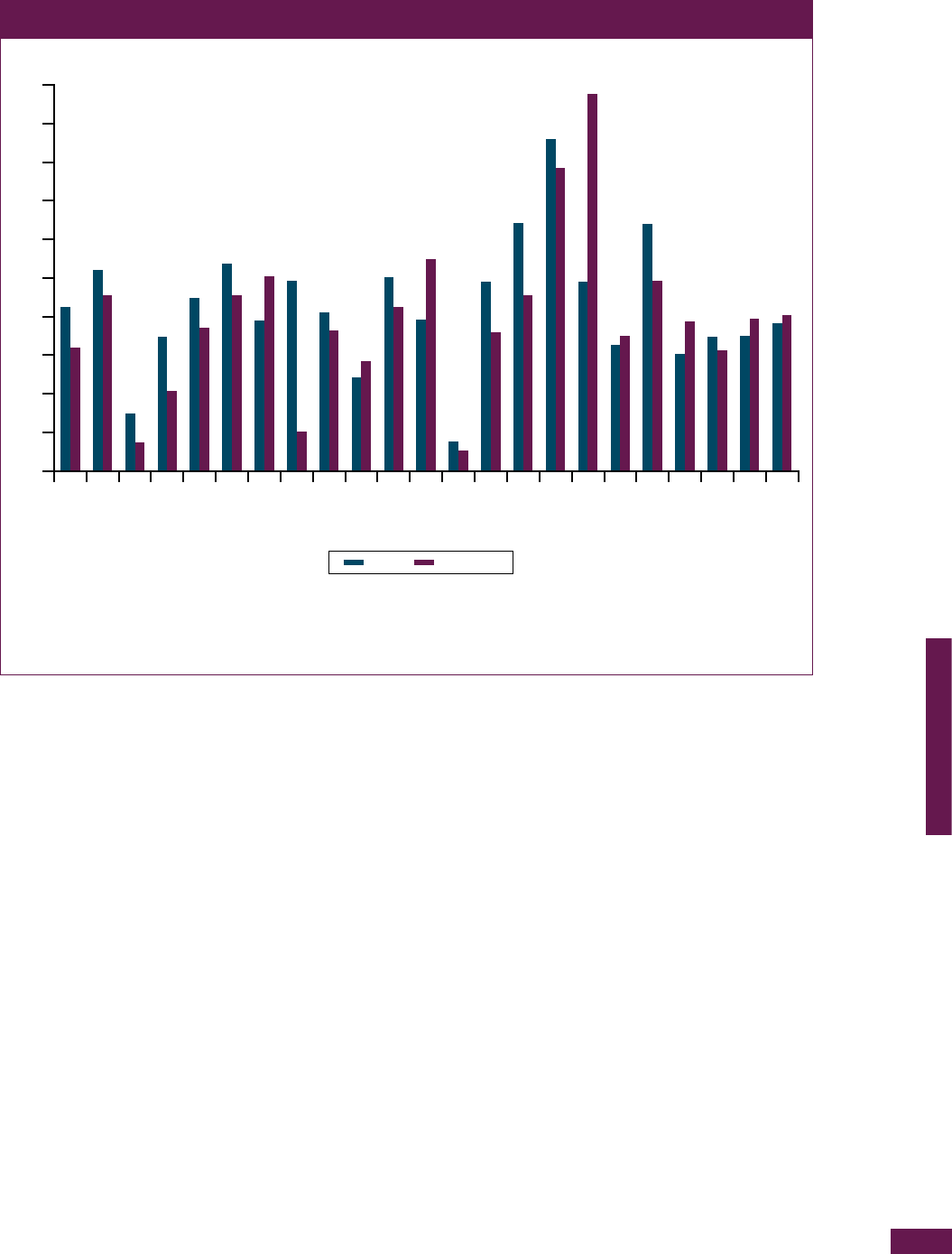
85
D. TRADE OBSTACLES
TO SMEs’ PARTICIPATION
IN TRADE
LEVELLING THE TRADING FIELD FOR SMES
note that the TEC database provides information
on total trade flows by firm size (according to five
categories: 1-9 employees, 10-49 employees, 50-249
employees, 250+ employees and unknown) and not
by individual firm. Furthermore, sectoral information is
aggregated at the 2-digit level (ISIC Rev. 4) and trade
flows are not simultaneously broken down by sector
and partner. This significantly limits the precisions of
the estimations of tariff faced by firms’ size.
Notwithstanding these limitations, Figure D.5 shows
the weighted average effectively applied tariff that
SMEs face in their export markets for a subset of OECD
countries. In order to calculate the average tariff faced by
firms by size, data on firm-level trade flows from the TEC
database were combined with tariff data from UNCTAD’s
Trade Analysis Information System (TRAINS). Data from
2011 are used because of better data availability for this
year. The figure does not show a clear monotonic trend
between size and tariffs, but in 17 out of the 23 countries
in the sample, large firms face lower average tariffs than
at least one of the other three categories of firms of
smaller size (micro, small or medium enterprises).
(b) Non-tariff measures hinder SMEs trade
in goods
NTMs are perceived to be a major obstacle to trade by
both small to medium and large firms,
13
and appear to
be the most relevant obstacle for EU firms wanting to
access the US market (Figure D.3), as well as being
a major obstacle for US firms (Figure D.1). According
to a study by the ITC (International Trade Center (ITC),
2015c), small firms in developing countries appear to
be hit the hardest. The ITC survey, based on responses
from 11,500 exporters and importers in 23 developing
countries, shows that small firms are perceived to be
most affected by NTMs. Conformity and pre-shipment
requirements in the export market, and weak inspection
or certification procedures at home, appear to be the
major hurdles. In agriculture, certification costs are
among the hardest obstacles to move up the value
chain in developing countries, particularly for SMEs
(Table D.2). Box D.2 provides some examples – drawn
from the CBI technical assistance experience – of what
type of obstacles SMEs face in dealing with non-tariff
barriers.
Figure D.5: Average applied tariff faced by firm size (excluding intra-EU trade), 2011
Tariff rate (%)
0
1
2
3
4
5
6
7
8
9
10
Austria
Canada
Belgium
Finland
Estonia
France
Germany
Greece
Hungary
Ireland
Italy
Mexico
Latvia
Netherlands
Poland
Slovak Republic
Slovenia
Portugal
Spain
Sweden
Turkey
United States
United Kingdom
SMEs Large firms
Note: Trade weighted averages by firm size are calculated aggregating sectoral (firm-size) tariffs across sectors using as weights firm-size
level’s export distribution across sectors. For EU countries, tariff figures refer to tariffs faced in non-EU markets.
Source: Authors’ calculations based on TEC database and UNCTAD’s Trade Analysis Information System.

WORLD TRADE REPORT 2016
86
Very few studies provide an indication as to how NTMs
affect exporters of different sizes. Yet, the trade impact
of SPS/TBT measures is likely to depend on the size of
the exporter. NTMs are commonly regarded as having
an important fixed cost component, which significantly
differentiates them from tariffs. For example, a large
initial investment may be required for a firm to comply
with a certain foreign standard, but once the new
technology is acquired there may be no additional
variable costs.
14
Similarly, a qualification or certification
requirement for service-providing personnel may
involve an initial cost of obtaining the qualification or
certification, but no additional variable costs. Fixed
costs, independent of the volume/value of trade, are
relatively more burdensome for SMEs because they
represent a higher share of their volume of affairs.
Evidence shows that tighter TBT/SPS measures are
particularly costly for smaller firms. Focusing on the
electronics sector, Reyes (2011) examines the response
of US manufacturing firms to the harmonization of
European product standards to international norms. He
finds that harmonization increases the entry of non-
exporting firms to the EU market, and that the effect is
stronger for US firms that already export to developing
countries but not to the EU. These firms are on average
smaller than firms exporting to the EU. Focusing on
Senegal, Maertens and Swinnen (2009) show that
vegetable exports to the European Union have grown
sharply between 1991 and 2005 despite increasing
SPS requirements, resulting in important income gains
and poverty reduction. But tightening food regulation
has induced a shift from small farmers to large-scale
integrated estate production.
When a new restrictive SPS measure is introduced
in a foreign market, smaller exporting firms are those
exiting the foreign market as well as those that lose
more in terms of volumes of trade. The paper by
Fontagné et al. (2016) is the only one to provide some
evidence on how markets adjust to the introduction of
more restrictive SPS measures. Using individual export
data on French firms provided by the French Customs,
Fontagné et al. find that restrictive SPS measures (as
measured by specific trade concerns) negatively affect
both small firms’ participation in trade and their volume
of trade. In particular, they estimate that restrictive SPS
measures that have triggered the exporting country to
raise a concern at the WTO SPS Committee, reduce
on average a firm’s probability to export by 4 per cent.
The mean effect of a restrictive SPS measure on the
value of exports (the intensive margin) is approximately
18 per cent. However, this negative impact of restrictive
SPS is reduced for larger players.
Box D.2: SMEs and non-tariff barriers: the importance of transparency and predictability
Each year, the CBI (Centre for the Promotion of Imports from developing countries, part of the Netherlands
Enterprise Agency and commissioned by the Ministry of Foreign Affairs of the Netherlands) provides trade-
related technical support to over 700 SME exporters in developing countries. An important lesson from SMEs in
CBI programmes concerns the predictability and transparency of standards and regulations.
In Kenya’s tea sector, for example, CBI has supported the product and market diversification into value-added
teas with special flavours and processed into tea bags. As CBI Expert Phoebe Owuor says: “Whereas market
access barriers in the EU markets are often high and costly to comply with for the tea-exporting SMEs, the
exports to regional and emerging markets have proved more difficult as a result of lack of information about
actual conditions”.
CBI’s experience in company-level technical assistance has shown that exporting SMEs from developing
countries increasingly invest in staff skills and knowledge pertaining to market access requirements. Increasingly,
exporting SMEs also establish clear internal processes and guidelines to ensure compliance with domestic as
well as internationally agreed regulations.
Conducting market research is key for SMEs wishing to target new markets, by looking at worldwide and local
demand, competitors, and market access conditions (including both tariff and non-tariff barriers). Useful tools
include paid services (often with a sector focus), as well as “global public goods” such as those offered by
ITC Market Access tools (including Trademap, Macmap and Standardsmap), as well as BI’s Market Intelligence
platform on the European markets, which contains content based on a combination of quantitative and qualitative
research, including inputs from 24 sectoral sounding boards consisting of experts and entrepreneurs from
European importing industries (www.cbi.eu/market-information). But SME exports continue to be hampered by
changing regulations, lack of clarity, and unpredictability.
Source: Schaap and Hekking (2016).
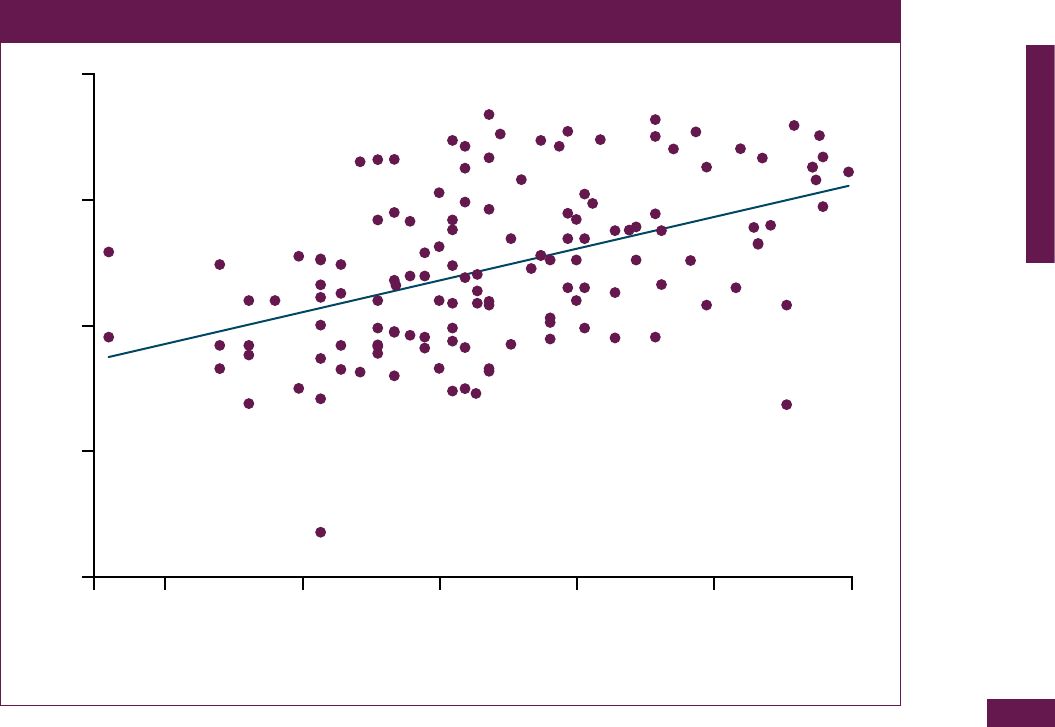
87
D. TRADE OBSTACLES
TO SMEs’ PARTICIPATION
IN TRADE
LEVELLING THE TRADING FIELD FOR SMES
As shown in Fontagné et al. (2016), larger firms
lose less than smaller firms from the introduction
of restrictive SPS measures into the export market
because they are able to absorb part of the higher
costs.
15
Prices increase follow the introduction of a
restrictive measure in the export market, but this is
less the case for larger firms. This is because large and
potentially more efficient firms are likely to comply with
more stringent requirements more easily and at lower
cost. Large exporters with higher market shares and
lower demand elasticities also pass less of the cost
increase on to the consumer.
There is also some case-specific evidence that the
impact of NTMs on trade depends on the size of the
exporters. The impact of certification on the sourcing
strategy of firms in asparagus exports from Peru is an
example of the potential negative impact that NTMs can
have on small firms. Peru is the largest exporter of fresh
asparagus worldwide and the sector has significantly
increased in the last decade both in terms of volumes
of exports and number of exporters. This happened at
the same time that the number of private standards
in the sector multiplied. This success story, however,
goes together with the evidence that the proliferation
of private standards has affected the sourcing strategy
of firms, at the expense of small producers. Certified
export firms currently source less from smallholder
producers (1.5 per cent) than do non-certified firms
(25 per cent). Before becoming certified (in 2001),
instead, export firms sourced more from smallholder
producers (20 per cent) (Maertens and Swinnen, 2015).
(c) Customs procedures
Gains from trade facilitation are likely to be larger
for SMEs. As trade costs fall, more and more firms,
increasingly less productive, will start to export (see
Section C). Trade facilitation can, therefore, promote
the entry of SMEs into export markets. The simple
correlation between the minimum size of exporting
firms by country and export time support this
possibility. As shown in Figure D.6, the lower time to
export is associated with smaller exporting firms. But
empirical evidence on the heterogeneous effect of
trade facilitation on trade by firm size is limited.
Existing econometric evidence on the impact of trade
facilitation on exports at the firm level supports the
view that both large firms and small firms benefit from
Figure D.6: Relationship between minimum export sale (per country) and time to export
2
0
5
10
15
20
2.5 3
ln(time to export) in days
ln(minimum export sale) in US$
3.5 4 4.5
Source: WTO (2015).

WORLD TRADE REPORT 2016
88
trade facilitation, and that, in particular, small firms
benefit the most in term of exports, when the effect
of trade facilitation on fostering the entry of new firms
in the export market is also taken into account. Using
the World Bank Enterprise Surveys database, Han
and Piermartini (2016) show that the effect of trade
facilitation on trade depends on a firm’s size. When both
exporting and non-exporting firms are included in the
sample of analysis, micro, SMEs profit more than large
firms from reduced time to export. Han and Piermartini
estimate that trade facilitation measures that reduced
export time for all firms at the median regional level may
boost the share of SME exports by nearly 20 per cent
and that of large firms by 15 per cent. This is because
small firms are more likely to start exporting. When only
exporting firms are taken into account, (Hoekman and
Shepherd, 2015) find, however, that reduced time to
export does boost firms’ export shares, but it does this
equally for small and large firms.
There is also evidence that different provisions of the
Trade Facilitation Agreement affect small and large
firms differently. Using the firm-level customs data of
French exports, and looking at the effects on a firm’s
export of improving trade facilitation in the importing
country rather than in the exporting country itself,
Fontagné et al. (2016) show that while, in general, all
exporting firms gain from improved trade facilitation
in the importing country, the relative effects on small
and large firms vary according to the type of facilitation
measure.
The study finds that small exporting firms profit
relatively more when trade facilitation improvements
relate to information availability, advance rulings and
appeal procedures. For example, if all East Asian and
Pacific countries adopted the region’s best practices
in measures that improve information availability, small
exporting firms would export 48 per cent more than
they currently do and medium-sized firms would export
25 per cent more (there would be no significant effect
for big firms). Large exporting firms profit relatively
more when the importing country’s facilitation reforms
relate to the simplification of formalities. One possible
explanation, provided by the authors, is that the
simplification of formalities reduces corruption at the
border and that this, in turn, has a positive effect on the
propensity of large firms to trade. Large firms are, in
fact, empirically found to be more sensitive than small
firms to corruption.
(d) Trade policy and services SMEs
Assessing which trade barriers are particularly
burdensome for SMEs’ services exports presents
a number of challenges. First, services trade as
defined in the GATS is multimodal: it encompasses
not only cross-border transactions (mode 1), but also
consumption of a service in a foreign territory (mode
2) and the movement of the supplier abroad, either
to establish a commercial presence (mode 3) or in
person (mode 4).
16
Most services may be traded via
more than one mode of supply. As such, the impact
of barriers to trade in one particular mode is likely to
depend on whether or not the mode in question is a
service supplier’s preferred export avenue. Second,
there are no theoretical analyses and few empirical
studies directly addressing this question. Third, little is
known about the characteristics of services exporting
SMEs, and what information exists is largely based on
experiences in developed countries.
Nevertheless, available empirical literature on the
export behaviour of services SMEs (Lejárraga and
Oberhofer, 2013) provides a useful background against
which to assess this question. Service SMEs that export
employ relatively more highly skilled workers, pay higher
wages and are more innovative, but are not necessarily
always larger. The positive relationship between firm
size and export likelihood is in fact inconclusive in the
case of services, whereas it is firmly established for
manufacturing.
Using firm-level data for France, Lejárraga and Oberhofer
(2013) find that firm size has a positive effect on the export
probability for suppliers of financial, ICT and professional
services, but no impact for travel service providers, for
instance. Importantly, as already discussed in Section
B.1 and evidenced by the survey results presented in
Section D.1, the one element that emerges strongly
from available research is the substantial heterogeneity
in traders’ characteristics across services industries
(Lejárraga et al., 2015). Drawing firm conclusions about
“service-exporting SMEs” as one monolithic category is,
therefore, rather difficult.
In terms of how to export, services SMEs’ choice of
mode of supply depends on the comparative cost and
expected revenue involved. They may choose one
mode, or may wish, or need, to rely on several modes
to serve foreign markets. Mode 1 trade in ICT services,
for instance, will be facilitated by associated mode 4
movements that enable the supplier to be physically
close to its customers. Moreover, not all modes are
equally feasible ways of exporting services: hotel
services can be supplied essentially via mode 2 only,
for instance, while exports of construction services are
hardly possible cross-border.
Persin (2011) argues that service SMEs tend to lean
towards “soft” forms of internationalization, because of
size constraints, and export essentially via mode 1 and
mode 4. Kelle et al. (2013) analyse firms’ choices of
exporting across borders or through the establishment
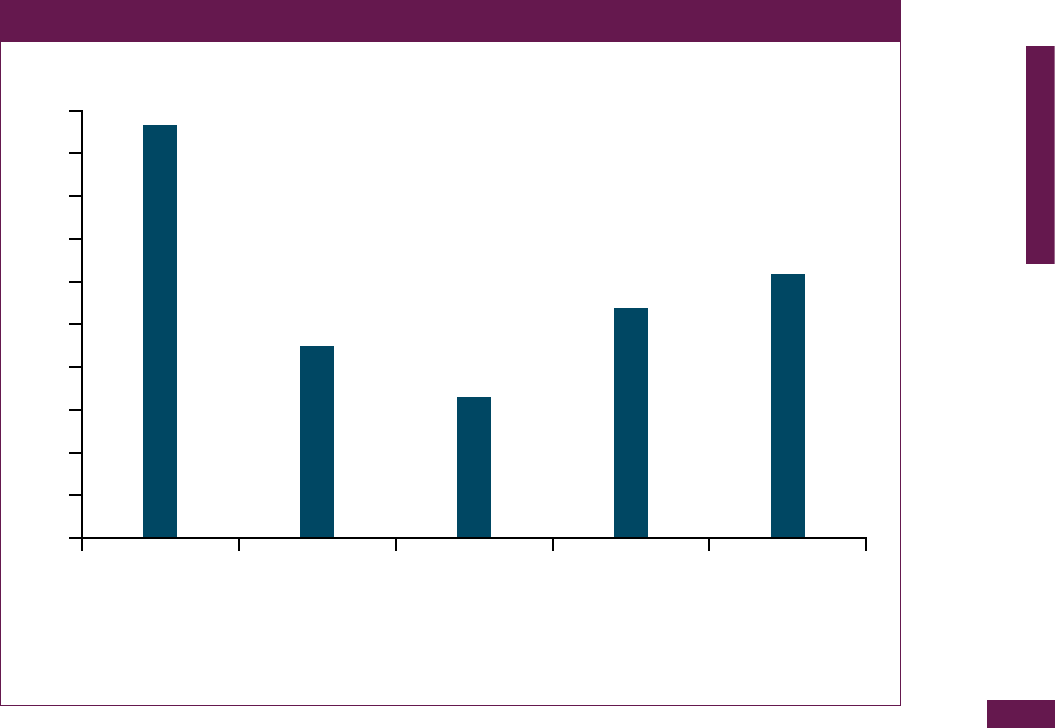
89
D. TRADE OBSTACLES
TO SMEs’ PARTICIPATION
IN TRADE
LEVELLING THE TRADING FIELD FOR SMES
of a commercial presence. Relying on firm-level data for
Germany, they empirically confirm SMEs’ preferences
for mode 1. In a study by Henten and Vad (2001), Danish
SMEs are also found to export services by relying more
on cross-border trade than on the establishment of a
commercial presence, except in the case of financial
services.
In addition to direct exports, SMEs have recourse also
to indirect forms of internationalization. These include
indirect exports through intermediaries, which were
discussed as part of the GVC analysis in Section B.2,
technological cooperation with foreign enterprises or
non-equity contractual modes such as franchising and
licensing. Nordås (2015) observes that manufacturers
often rely on franchises with services SMEs, such as
car dealerships, petrol stations, pubs or hairdressers, to
distribute their goods.
Barriers to services trade are virtually all of a regulatory
nature, but some are likely to affect SMEs more than
others. A useful distinction in this sense is between
measures that affect firms’ ability to enter or become
established in a foreign market (“establishment”
measures), and those that have an impact on their
operations once they are present in that market
(“operation” measures) (see WTO, 2012 for a fuller
discussion). As the former usually designate fixed
costs, whereas the latter are more likely to imply
variable costs, it may be assumed that, for SMEs,
“establishment” measures will be relatively more
burdensome (Deardorff and Stern, 2008).
Given how heterogeneous traders are across services
industries, differences in the openness of regimes in
different sectors need to be considered. Figure D.7,
which is based on the World Bank’s Services Trade
Restrictiveness Index (WB STRI), provides information
about the restrictiveness of services policies across five
sectors. It shows that the steepest barriers are found
in professional services and transportation and, to a
slightly lesser extent, in telecommunication services.
In light of the discussion above, it is useful to
differentiate further, across different sectors, between
measures that restrict firms’ ability to establish in a
foreign market and those that affect their operations
once abroad. Using the data underlying the OECD
Services Trade Restrictiveness Index (OECD STRI),
Figure D.8 presents the relative importance of such
Figure D.7: Restrictiveness of services trade policy by sector, 2009
Restrictiveness of services trade policy
0
5
10
15
20
25
30
35
40
45
50
Professional
Retailing
Financial
Telecom
Transport
Source: Authors’ calculations based on World Bank STRI data for 2009.
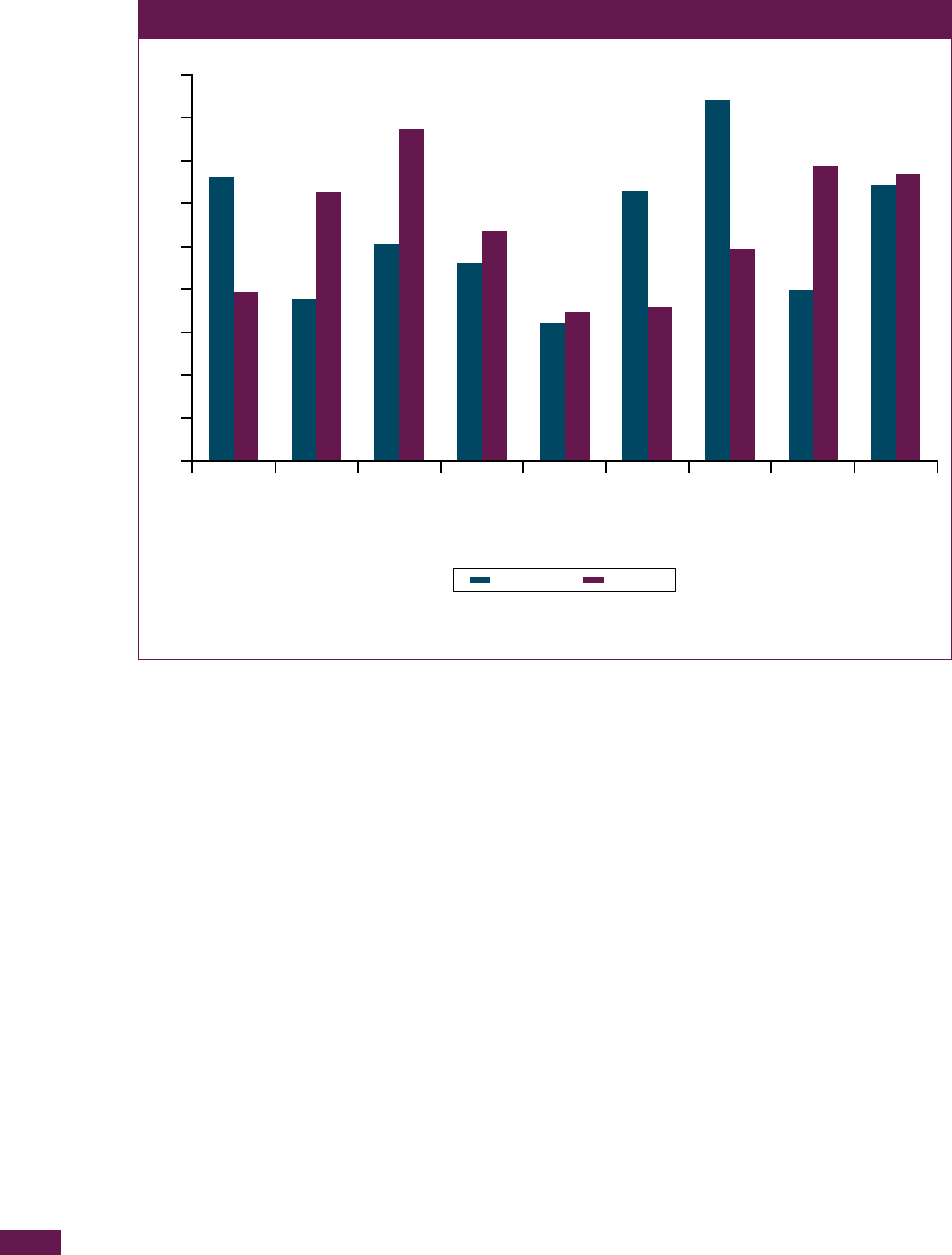
WORLD TRADE REPORT 2016
90
measures for the sectors and economies covered by
the index in 2015. It should be noted that, although
the titles of the World Bank and OECD indices are the
same, the two are different in scope, methodology and
country coverage. The OCED STRI is more recent and
covers a greater number of sectors, while the World
Bank STRI is much wider in terms of country coverage
but does not offer a ready-made distinction between
“operation” and “establishment” measures.
17
As Figure D.8 illustrates, “establishment” barriers are
most important for professional services, followed
by audiovisual, transport and financial services. This
would suggest that, in these sectors, SMEs will find it
relatively more challenging to export.
Trade barriers impact the mode(s) of supply which firms
rely on to serve foreign markets. As discussed, SMEs
depend more on cer tain mode s than on others. Although
no empirical analysis exists that can disentangle the
specific impact of trade policies on SMEs’ choice of
export mode, obstacles in those modes clearly affect
SMEs’ participation in services trade more severely,
relative to large companies in the same situation.
Still, one may assume that, as least as far as small
and micro enterprises are concerned, mode 3 would
not be viable even in the absence of any meaningful
restrictions, in light of the significant costs involved in
establishing a commercial presence abroad. Barriers
to mode 3 may therefore affect the smallest firms
relatively less than barriers to other modes of supply.
Indeed, most of the discussion of the measures that
affect the export ability of services SMEs focuses on
trade via modes 1 and 4, and, to a much more limited
extent, mode 3 (see, for instance, Adlung and Soprana,
2012; Nordås, 2015).
18
When it comes to mode 3, SMEs are impacted in
particular by measures that prescribe commercial
presence in the form of a subsidiary. As it is cheaper and
administratively less burdensome if firms are allowed
to become established through representative offices
or branches, SMEs are likely to be significantly more
impacted by requirements to be locally incorporated.
Other measures that can be assumed to have similar
effects include minimum capital requirements, training
obligations, residency requirements and the granting of
subsidies to domestic SME suppliers only.
Figure D.8: Average OECD STRI by type of measure, by sector, 2015
0
0.02
0.04
0.06
0.08
0.10
0.12
0.14
0.16
0.18
Audiovisual
Courier services
Construction
Distribution services
Computer services
Financial services
Professional services
Telecommunications
Transport
Establishment Operation
Note: The value of the OECD STRI ranges from 0 to 1, where 0 is completely open and 1 is completely closed.
Source: Author’s calculations based on the OECD STRI data for 2015.

91
D. TRADE OBSTACLES
TO SMEs’ PARTICIPATION
IN TRADE
LEVELLING THE TRADING FIELD FOR SMES
The most relevant barriers, as far as mode 1 is
concerned, are measures requiring firms to establish
a commercial presence in the host market in order
to supply cross-border services. Similarly, measures
imposing data localization requirements in foreign
markets are bound to impose a higher burden on SMEs.
Finally, barriers to mode 4 trade would appear to be
of particular relevance for SMEs. For starters, the
mode 4 category of “independent professionals” (i.e.
self-employed individuals supplying a service abroad)
concerns SMEs by definition. As such, all barriers to
the movement of independent professionals impose a
burden wholly, and solely, on SMEs. This is especially
crucial when considering the relevance that mode 4
is likely to have for exports from these “ultra-micro”
enterprises, and in view of the higher probability that,
given their relatively more highly skilled workforce,
smaller services firms may be contracted to supply
services internationally.
Barriers applicable to the mode 4 category of
“contractual service suppliers” can also be particularly
burdensome for SMEs. Contractual service suppliers
are employees of a service firm who enter the export
market pursuant to a contract concluded between their
employer and a local consumer. Similarly to independent
professionals, services exported by contractual service
suppliers are not contingent on the establishment of
a commercial presence, and are, therefore, less costly
to provide. Therefore, market access limitations such
as quotas or economic needs tests, as well as any
relevant discriminatory measures such as residency
requirements, non-eligibility under subsidy schemes,
discriminatory tax treatment or obligations to train
domestic workers that are applicable to these two
mode 4 categories, disproportionately affect SMEs.
There are a number of other services measures that,
although not trade barriers per se (i.e. not falling under
the six measures that are defined as market access
limitations under the GATS and not violating the GATS
national treatment disciplines), may nevertheless restrict
trade opportunities for SMEs in particular. Amongst
these are licensing and qualification requirements and
procedures, and technical standards, to the extent
that these are particularly costly or administratively
complex to fulfil and, as such, significantly increase
the fixed cost of entering a foreign market. It should be
noted, however, that, provided that these measures are
non-discriminatory, their effect is not only felt only by
foreign SMEs, but also by domestic ones. By raising the
cost of serving the domestic market, such measures
disproportionately affect small firms of any origin.
Still, it is true that, for those firms that export, domestic
regulatory measures are a cost to be borne in each
individual foreign market. SMEs are therefore less
likely than larger firms to export to multiple markets,
thus potentially reducing the extensive margin of trade.
This seems to be corroborated by empirical research.
Lejárraga and Oberhofer (2013) and Lejárraga et
al. (2014) find that SMEs’ export decisions are very
persistent, i.e. firms which enter a foreign market are
likely to continue to export services to that market over
the years. Their research also shows that, once they sell
abroad, services SMEs tend to export a higher share
of their total output compared to larger firms. As such,
they are disproportionally affected by trade-restricting
measures.
Lack of recognition of foreign work experience,
education or qualifications is also likely to prove a
relatively more burdensome hurdle for SMEs wishing to
export regulated services. In the absence of recognition
arrangements that “fast-track” the authorization to
supply a service in a foreign market, suppliers of
regulated services are required to embark in costly
and lengthy processes to demonstrate that they are
qualified to supply the service in question. Again,
suppliers will need to so for every market they wish to
enter. To the extent that firms have the resources to
set up a commercial presence abroad, they may obviate
this obstacle by hiring locally qualified professionals,
but this is likely to prove prohibitively expensive for
SMEs.
Visa and work permit requirements and procedures can
also be assumed to impose a relatively higher burden
on SMEs, in light of the greater relevance mode 4 has
for their exports. This is likely to be especially true for
developing country SMEs, as their employees (who are
usually nationals) tend to be subjected to comparatively
more stringent visa requirements, particularly so
when they are seeking to access other developing
country markets.
19
The introduction of programmes to
streamline entry formalities for businesses accredited
as “premium visa traders”, i.e. usually large concerns, is
also likely to put SMEs at further relative disadvantage
compared to bigger firms.
3. Other major trade-related costs
This section focuses on those firm-perceived obstacles
to trade identified in Section D.1 that go beyond the
strict definition of trade policies (tariff, non-tariff and
regulatory barriers discussed in Section D.2). Many
of the trade costs discussed in this section are those
arising from the services needed to do trade, such
as distribution costs, transportation costs and cost to
finance trading activity. In this respect, the analysis
here differs from the discussion in Section D.2(d),
which discussed obstacles to trade in services and not

WORLD TRADE REPORT 2016
92
the costs related to the use of services necessary to
the trading activity.
(a) Information and distribution channels
Beyond market access and regulator y barriers for goods
and services, additional trade costs that are higher
for SMEs can be identified in relation to information
and distribution channels. There are intermediary
companies, besides producers and consumers of goods
and services, which participate in creating the structure
of a distribution network, with a specific function to
fulfil. Distribution channels can, therefore, take various
forms: (i) direct sales of producers to clients; (ii) sales
through a retailer; (iii) sales through wholesaler(s)
and retailer, or (iv) sales using an agent working on
a commission basis (who can eventually bridge gaps
between producers and wholesalers/retailers or
clients). There are also some important functions that
support an efficient distribution network which may or
may not be fulfilled by these intermediaries, e.g. market
analysis, advertising, transport/logistics or after-sales
services.
For SMEs, having access to distribution networks may
be a crucial component to develop their business, in
particular for diversifying their customers within a
region or worldwide. As shown in Section D.1, reaching
clients in other economies may be challenging
for SMEs without access to relevant distribution
channels and related functions. This is reflected in
the high proportion of responses citing trade-related
impediments for SMEs in Figure D.1 (“Unable to find
foreign partners” and “Transportation/shipping costs”)
for the goods trade. For services, this can to a certain
extent be illustrated by the number of responses citing
“Difficulty establishing affiliates in foreign markets” in
Figure D.2, which reflects the need in many cases for
proximity with the client given the intangibility of the
products being traded and, in some instances, adapt
to the culture/language of the destination market.
Access to information by potential SME exporters on
distribution channels and destination markets can,
therefore, also be related to all that is described above.
Items in the distribution channel that can be identified
as hurdles for SME exporters are: having and choosing
goods or services fit for the export market, whether
targeting specific countries, regions or worldwide;
making their products known to potential clients;
delivery of products and associated risks (e.g. transport
and physical delivery of goods and services; online
delivery of products, ensuring that eventual property
rights are not at threat). In that context, it is important to
note that some intermediaries, such as those engaged
in e-commerce, may themselves be SMEs. In addition,
SME exporters also need to face the cost of gathering
market information, as well as access to regulatory
information in export destinations.
A firm that wants to export goods or services needs to
know about the regulations in the economy to which
it intends to export (for example, technical regulations
about the characteristics that a product needs to
meet, rules and regulations relating to trade). That
firm also needs information about export opportunities
in the destination market. Lack of knowledge about
regulations could result in the product not complying
with the importing country regulations, which, in turn,
could cause the firm to face the costs of the product’s
rejection at the border of the target country. Lack of
knowledge about the demand in the export market
may also induce profit losses. Gathering information
is costly. Anderson and van Wincoop (2004) estimate
that approximately 6 per cent of total trade barriers are
information costs. These are broadly defined to include
information flows generated by migration networks
Rauch and Trindade (2002), volume of telephone traffic
and number of branches of the importing country’s
banks located in the exporting country.
Gathering information is a crucial factor in determining
export decisions, but it bears a cost. This cost is to
a large extent independent of how much a firm will
export. Therefore, it is a cost that affects especially
small firms that are less capable than large firms of
spreading information costs across output. A recent
survey by the Conférence permanente des chambres
consulaires africaines et francophones (CPCCAF),
asking “When exporting, what are the main types of
information you need?”, shows that trade contacts
and business opportunities are the most significant
information barrier faced by small firms in Africa,
followed by information on relevant regulations, and on
export support measures (see Table D.3).
Delivery and logistical aspects are also an issue in
trade, in particular for SMEs, whether as producers
or intermediaries. SMEs often have to rely on
existing solutions to have their products delivered
to clients. These include services offered by postal
systems, express delivery services, cloud services, or
Table D.3: Main information barriers faced
by SMEs in Africa
Information on Average %
Trade contacts and business opportunities 69
Relevant regulations 41
Export support measures 41
Target markets 34
Others 2
Source: Adapted from WTO and ITC (2014), based on CPCCAF survey
data.

93
D. TRADE OBSTACLES
TO SMEs’ PARTICIPATION
IN TRADE
LEVELLING THE TRADING FIELD FOR SMES
downloading platforms through licensing arrangements.
For this reason, it is important to ensure that an effective
solution is chosen. Alternatively, SMEs may decide to
be creative. For example, in e-commerce “while larger
businesses like the online retailer Ozon.ru may choose
to build their own distribution networks, this option is
out of reach for micro and small businesses that may
need to explore other innovative solutions, e.g. the
motorbike delivery system used in Viet Nam. Out-of-
home delivery – involving collection points, delivery
at work, parcel lockers and in-store pickup – is one
option to increase the attractiveness of e-commerce in
developing countries” (UNCTAD, 2015).
The support of intermediaries in a distribution channel
is most often used by companies that cannot sell
products by themselves. Although direct contact with
clients helps to establish prices, the participation of an
intermediary ensures that the product will be provided
more efficiently by means of their networks, contacts,
experience, specialization or lower costs borne by the
intermediary. For example, some intermediaries hold
directories of potential clients and/or (specialized)
distribution firms, conduct in-country market research,
help to address language barriers (e.g. via translation
services), or offer assistance for travel arrangements or
follow-up support. For SMEs, direct contact with clients
has traditionally been seen as more effective than use
of intermediaries in the distribution channel, and this
is particularly true for services, with which exclusive
distribution strategies, a single product, clearly defined
clients and episodic sales are the rule. When it comes
to exporting its products, this “direct” model may be
more difficult to implement for SMEs, in particular if
they want to reach a wider set of clients. For SMEs,
using go-between services reduces the portion of
tasks that they would do themselves if they decided not
to use such intermediaries.
20
It also reduces part of the
associated risks or clients’ fears, by providing advice/
interactivity, trust with payments, or the perception
that purchases are not so complex. In addition, using
intermediaries may be a lighter solution for SMEs than
establishing affiliates in services (or eventually goods)
export markets, unless the size of business is big
enough to justify such an establishment.
In the context of distribution networks, marketing
through the Internet (e.g. through the use of search
engines) or email, social networking platforms (e.g.
Facebook) and e-commerce have had an important
role in recent years. Whether using the direct channel
(i.e. direct sales of producers to clients) or indirect
means (i.e. intermediaries), these distribution network
instruments have enabled a greater participation of
SMEs in international trade by increasing the visibility
of their products and allowing the establishment of
links with clients in potential overseas markets (see
Section D.4 below). They have also helped enterprises,
in particular SMEs, to obtain information more easily on
foreign markets (e.g. analytical solutions such as those
offered by search engines or e-commerce companies),
as well as to access information on regulatory matters
or standards. Finally, these distribution networks have
assisted SMEs to obtain information on the network
itself, to understand how best they can approach clients
(i.e. via the ideal agent/dealer/distributor, payment
systems, marketing resources, shipping and receiving
logistics, etc.).
(b) Transport and logistics
Trade logistics goes beyond shipping goods across
borders; it covers a wide range of services from
the pick-up of goods, consolidation of shipment,
procurement of transportation, customs clearance,
warehousing and distribution, to the delivery of goods
to final consumers. SMEs often lack international
freight shipment experiences, and their cargos are
usually smaller and of more irregular frequency. SMEs’
imports and exports therefore rely on services provided
by logistics providers.
Compared to big firms, SMEs face particular logistics
challenges arising from higher logistics costs and the
inability of accessing efficient logistics services, which
are two sides of the same coin. This is even more the
case for SMEs in developing countries, due to poor
logistics infrastructure and underdeveloped logistics
markets. The World Bank Logistics Performance
Index consistently shows that logistics costs in low-
performance countries (mainly developing countries)
are higher than in high-performance countries (mainly
developed countries). Logistics challenges constitute
an important impediment to SMEs’ participation in
trade.
SMEs trade smaller quantities than big enterprises do.
This implies that fixed trade costs, including logistics
costs, often make up a greater share of the unit cost
of their goods when compared to rivals exporting
larger volumes. In other words, logistics tend to cost
more for SMEs than for large enterprises. For example,
in Latin America, domestic logistics costs, including
stock management, storage, transport and distribution,
can add up to more than 42 per cent of total sales for
SMEs, as compared to 15-18 per cent for large firms.
In Nicaragua, logistics costs for small beef producers,
from farm to abattoir, are more than double of what they
are for large producers. For a small exporter to move a
kilogramme of tomatoes from a Costa Rican farm to
the final point of sale in Managua, Nicaragua, transport
represents the main cost, at almost a quarter of the total
cost (23 per cent), followed by customs (11 per cent)
and taxes (6 per cent). In contrast, for large exporters,

WORLD TRADE REPORT 2016
94
the main costs are customs (10 per cent), followed by
transport (6 per cent) and taxes (5 per cent) (OECD,
2014). Hence, reducing logistics costs is crucial for the
improvement of SMEs’ trade opportunities.
Geographical distance clearly affects SMEs’
participation on export. Evidence shows that, compared
to large firms, SMEs are discouraged from entering
distant markets. For instance, research conducted
on French firms indicates that small firms export on
average 3.7 per cent less to export destinations that
are 10 per cent further away from France. For those
SMEs exporting to distant markets, the average
shipments per product and per firm are greater in order
to overcome the transportation costs.
According to a study undertaken by the USITC (USITC,
2014), the low reliability and high costs of shipping
represent significant barriers for US-based SMEs’
exporting to the European Union. Cost and reliability
problems of EU postal systems have forced companies to
use private couriers for shipping, which results in higher
costs that are harder for small businesses to absorb.
Shipping costs are also a major obstacle for EU SMEs’
exports to the United States, “because of the distance
to the US market, business owners are concerned that
the cost of transportation will increase the price of their
products to a point where they can no longer compete
with products manufactured locally” (UPS, 2014).
In order to reduce logistics costs, firms (especially
big manufacturers or big retailers) tend to outsource
logistics functions (transport, warehousing, inventory
management, freight forwarding, etc.) to specialized
providers, i.e. providers of “third-party logistics” (3PL).
“Outsourcing in logistics is a sign of strong logistics
performance and of a mature logistics market, and
is often a direct marker of logistics sophistication”
(World Bank, 2014). Partnerships with 3PL providers
not only allow firms to focus on their core business;
it also means access to advanced logistics services
and supply chain management. Advanced logistics
services are ICT-intensive and adapt quickly to new
technologies, which often require the integration of
supply chain management platforms with customers’
internal systems. Due to resource constraints, SMEs
often lag behind in adapting to technological advances
and are reluctant to tap into the 3PL market. The small
size of their businesses is also a disadvantage for SMEs
wishing to negotiate affordable contracts with 3PL.
21
SMEs face disproportionally high logistics costs
(Straube et al., 2013). For manufacturing firms with
less than 250 employees, on average their logistics
costs account for 14.7 per cent of their overall revenue.
Conversely, firms with more than 1,000 employees
state that the logistics costs only account for 6.7 per
cent of their total revenue. This figure is similar for firms
with 250 to 1,000 workers, which report that logistics
costs account for 6.4 per cent of their total revenue.
The research includes 113 industrial firms across the
world, and the break-up figures on regional or national
levels affirm the above findings. For example, in China,
SMEs reported spending 15 per cent of their overall
revenue on logistics costs, whereas large firms (more
than 1,000 workers) reported spending only 5.2 per
cent. In South America, SMEs reported spending 15.3
per cent of overall revenue and large firms reported
spending 9.4 per cent (OECD and World Bank, 2015).
(c) Financing difficulties
International activities are more dependent on external
capital than domestic activities. Moreover, credit
constraints are particularly reflected in access to trade
finance. This subsection discusses access to finance
for firms that are involved in trade, with a focus on trade
finance in the second part.
(i) Access to finance
Selling to foreign markets involves specific fixed and
variable costs: developing marketing channels, adapting
products and packaging to foreign tastes, and learning
to deal with new bureaucratic procedures. The time lag
from production to the realization of the corresponding
revenues is longer for international than for domestic
sales. Moreover, international sales contracts are more
complex, more risky and less enforceable, thus often
requiring some forms of external credit insurance. For
all these reasons, exporters are more likely to need
external credit.
Lack of, or insufficient access to, finance can strongly
inhibit formal SME development, regardless of the level
of per capita income of countries. Lending to SMEs,
especially for longer maturity dates, is often inhibited by
informational problems and transaction costs, including
the absence of records of firm’s past performance
(required when requesting a loan), lack of collateral, and
high fixed costs of financial transactions, all of which
often translate into higher lending costs and greater
risks for financial institutions, and hence higher interest
rates and fees for SMEs than for larger firms. Indeed,
recent research found that market failures, notably
in financial markets (due to either financial crises
or “information asymmetries”), fall disproportionally
on SMEs, resulting in more credit rationing, higher
“screening” costs and higher interest rates from banks
than for larger enterprises (Stiglitz and Weiss, 1981;
Beck and Demirguc-Kunt, 2006).
Financial exclusion, by forcing small firms to rely
exclusively on their own resources to meet their
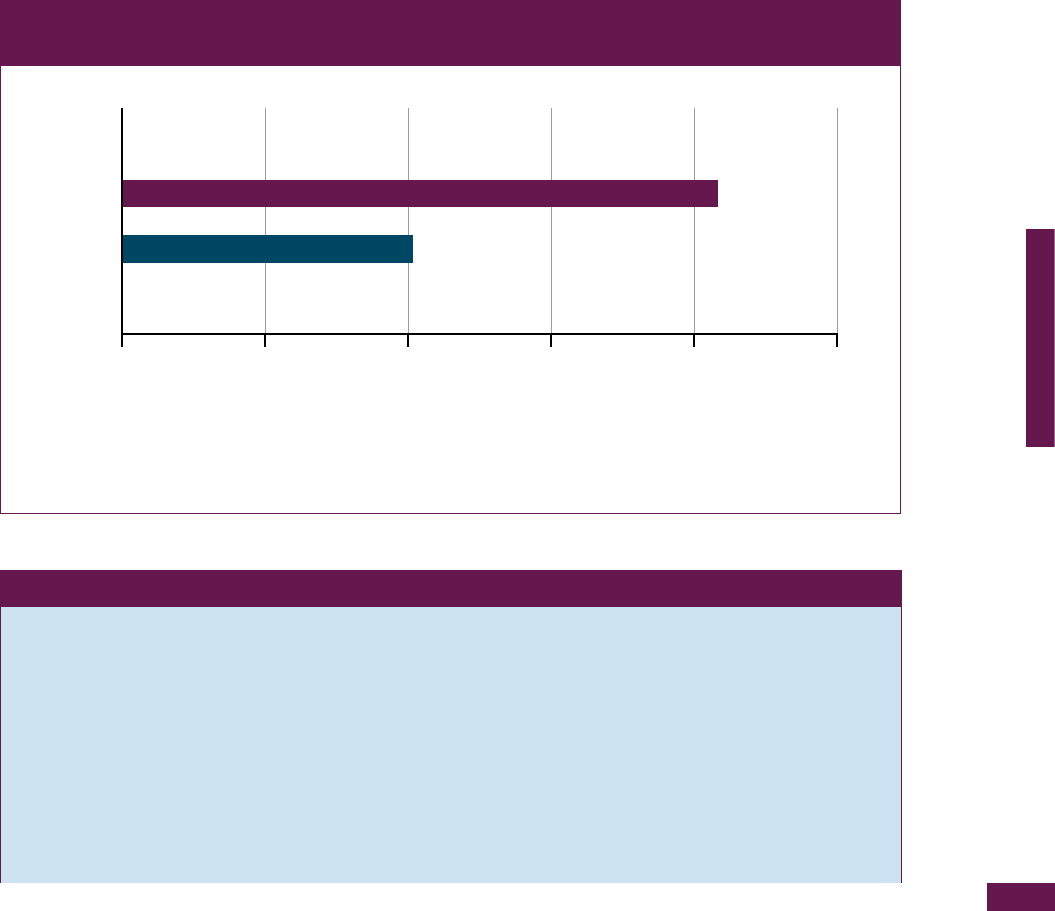
95
D. TRADE OBSTACLES
TO SMEs’ PARTICIPATION
IN TRADE
LEVELLING THE TRADING FIELD FOR SMES
financial needs, reduces economic opportunity. Beck
et al. (2008) find that small firms use less external
finance, especially bank finance. SMEs rely more on
trade credit and informal sources and less on equity
and formal debt than large firms. Availability of external
finance is positively associated with the number of
start-ups – an important indicator of entrepreneurship
– as well as with firm dynamism and innovation; and
allows existing firms to exploit growth and investment
opportunities, and to achieve larger equilibrium size.
Figure D.9 provides some indicators of the degree
to which SMEs are able to access formal financial
systems.
Poor access to finance affects the structure of
international trade. Beck (2002) explored, from a
theoretical and empirical point of view, the link between
the level of financial development and the structure of
international trade. The empirical exercise (estimation
from a 30-year panel with 65 countries) gives support
to the predictions of the model, namely that countries
with a higher level of financial development (measured
by credit to the private sector by deposit money banks
and other financial institutions as a share of GDP) have
higher shares of manufactured exports in GDP and
in total merchandise exports and have a higher trade
balance in manufactured goods.
Barriers in access to finance also inhibit SMEs’ ability
to use the Internet to engage in international trade. In
fact, one of the most difficult barriers to overcome when
selling abroad relates to the difficulty or impossibility of
processing online payments. Box D.3 discusses barriers
to online payments and the e-payment alternatives to
bank cards that have emerged worldwide.
Figure D.9: Firms with a bank loan/line of credit
(percentages)
Large firms
SMEs
10% 20% 30% 40% 50% 60%
Note: SMEs are defined based on local banking context. If there is no local definition, the World Bank Group definition may be used as
a guideline. The World Bank Group defines a firm as an SME if it meets two of the following three requirements: (i) it has less than 300
employees, (ii) it has less than US$ 15 million in assets, and (iii) it has less than US$ 15 million in annual sales. As some financial institutions
are unable to report data based on any of these three criteria, loan size is also used as a proxy. In that case, a firm is considered an SME if the
size of its outstanding loan from a financial institution is less than US$ 1 million.
Source: World Bank Group Enterprise Surveys, data refer to the most recent year available for each country.
Box D.3: Barriers to the internationalization of SMEs: the case of online payments
A 2009 survey of 9,480 SMEs in 33 European countries found that only 28 per cent of firms’ websites allow
for orders to be placed online and only 14 per cent of SMEs have websites that allow online completion of the
entire transaction, including payments (European Commission, 2010). Another survey of 352 SMEs across the
European Union (ECommerce Europe, 2015) revealed that 25 per cent of merchants considered online payments
a problematic area.
22
When asked for concrete examples of persistent barriers linked to online payments across
the European Union, online merchants specifically mentioned outdated regulations impeding the roll-out of
innovative online payment methods, high costs (e.g. burdensome interchange fees and processing fees of banks
and third-party payment providers), the lack of a uniform electronic identification system of consumers, thus
obliging consumers and merchants to go through burdensome authentication and identification processes, and
complicated check-out processes, prompting consumers to leave the process prematurely when authorization
and authentication requires too many steps.

WORLD TRADE REPORT 2016
96
(ii) Trade finance
Difficulty in accessing affordable trade finance is one
of the most cited constraints for SMEs engaging in
international trade, affecting small businesses in both
developed and developing countries.
Regarding developed countries, the 2010 USITC survey,
covering 2,350 SMEs and 850 large firms, concluded
that 32 per cent of SMEs in the manufacturing sector
and 46 per cent of SMEs in services sectors considered
the process of obtaining finance for conducting cross-
border trade “burdensome”. Only 10 per cent of large
firms in the US manufacturing sector and 17 per cent in
the services sector experienced the same difficulties.
The USITC study also revealed that, for SMEs looking
to start exporting or expanding into new markets,
the lack of access to credit was the number one
constraint for manufactured firms, and number three
for services firms, out of 19 constraints listed in the
survey. Sectors which generally show significant levels
of creditworthiness and collateral (such as transport
equipment, information technology and professional
services) considered that securing trade finance was
as “acute” a problem for them as for other sectors.
Finally, the survey highlights that while US banks
considered the SME market segment as having a
large potential for profitability, SMEs were not their
preferred borrowers in view of the higher transactional
and informational costs of dealing with such companies
(relative to larger corporations). In turn, US-based
SMEs complained about bank’s “excessive” oversight,
failure to meet their specific borrowing needs, and lack
of flexibility regarding the use of alternative sources of
finance, rather than the proposed ones.
One may also mention the OECD-APEC study on
Removing Barriers to SME Access to International
Markets, surveying SMEs’ perception of the barriers to
their internationalization (OECD, 2008). The shortage
of working capital to finance exports is ranked as the
number one constraint to the internationalization of
SMEs. Surveys and studies found similar results in
Europe and Japan. In a study covering data on 50,000
French exporters, it was found that, during the financial
crisis of 2008-09, credit constraints on smaller
exporters were much higher than on larger firms, to the
point of reducing the range of destination for business
or of leading the SME to stop exporting altogether
(Bricongne et al., 2012). It was found that in Japan,
SMEs are also more likely to be associated with troubled
banks, and hence exporting SMEs are as a result more
vulnerable in periods of financial crises (Amiti and
Weinstein, 2011). In general, credit-constrained firms,
mostly likely to be found among SMEs, are also less
likely to export (Bellone et al., 2010; Manova, 2013).
Access to trade finance tends to be the most difficult
in developing countries. Part of the problem lies with
the fact that local banks may lack the capacity, know-
how, regulatory environment, international network and
foreign currency to supply import and export-related
finance. Equally, traders may not know the products
available to them, or how to use them efficiently. Banks
in some developing countries may be more risk-averse,
in view of their smaller capital base and ability to handle
international trade-related credit risk.
According to a recent study by the Asian Development
Bank (ADB, 2014), small and medium-sized enterprises
(SMEs) are the most credit-constrained; it is estimated
that half of their requests for trade finance are
rejected, compared to only 7 per cent for multinational
Box D.3: Barriers to the internationalization of SMEs: the case of online payments
(continued)
The situation is not different in other regions. For example, the vast majority of payments for online retail in
ASEAN countries are still made offline, in methods such as cash-on-delivery. A survey conducted in 2013
found that only 2 to 11 per cent of digital buyers use online payments in ASEAN countries, with the exception
of Singapore, where, according to the CIMB ASEAN Research Institute (CARI, 2015), the rate of online payment
use stands at 50 per cent. Financial exclusion (i.e. concerning the large “unbanked” population), concerns about
data security and burdensome know-your-customer processes are usually cited as the root causes of deficient
online payment penetration.
Many e-payment alternatives to bank cards have emerged worldwide and are now widely, although not yet
universally, accessible to Internet users, such as PayPal, Amazon Payments, and Alipay (CARI, 2015). Mobile
banking, i.e. the use of mobile phones to send and receive payments and conduct other banking transactions, has
been soaring throughout Africa. Kenya is at the forefront of Africa’s mobile money market, due to the success of
M-PESA, a mobile banking system launched in 2007 by the country’s leading mobile service provider, Safaricom.
Mobile banking is even acquiring a cross-border dimension. Last year, for example, Vodafone (Safaricom’s largest
shareholder) launched M-PESA services between Kenya and Tanzania. Cross-border mobile solutions like this one
might contribute to financial inclusion and provide a low-cost option for SMEs engaging in international trade.

97
D. TRADE OBSTACLES
TO SMEs’ PARTICIPATION
IN TRADE
LEVELLING THE TRADING FIELD FOR SMES
corporations. With 68 per cent of surveyed companies
reporting that they did not seek alternatives for
rejected transactions, trade finance gaps appear to
be exacerbated by a lack of awareness and familiarity
among companies – particularly smaller ones – about
the many types of trade finance products and innovative
options which exist on the market (such as supply-chain
financing, bank payment obligations and forfaiting). A
large majority of firms stated that they would benefit
from greater financial education.
Other obstacles in developing countries include
banking or country risks, particularly in the context of
regional and global financial crises; exports from Asian
countries, in particular during the Asian financial crises,
which led in certain cases to interruptions of imports
and exports when confirming banks did not trust letters
of credit issued in crisis-stricken countries (Auboin
and Meier-Ewert, 2004). More recently, exports from
Sub-Saharan and other low-income countries have
been particularly affected by the global financial
crisis because they are more dependent on bank-
intermediated finance than other regions (German
Development Institute, 2015).
The high level of concentration of global trade finance
markets may not help SMEs either. A recent study by
DiCaprio et al. (2015) revealed that a large share of
international trade finance is supplied by a relatively
small group of globally active international banks. This
group of about 40 banks accounts for some 30 per cent
of trade finance supplied internationally, with local and
regional banks supplying the rest of the market. In a
seminal paper, Amiti and Weinstein (2011) demonstrate
that the health of banks influence the trade finance
conditions offered to companies and hence the export
growth of these companies. Hence, the availability of
trade finance is largely influenced by the strength of
international banks at any point in time (Auboin and
Engemann, 2013; DiCaprio et al., 2015).
The main trade finance banks are also dominant in other
segments of financial services. As a result, financial
crises originating in other segments of these banks,
chan ges in pr ude ntia l r ule s, and any re ca libr atio n of th e ir
balance sheets have a direct impact on the provision
of trade finance globally and locally. For example, the
largest banks maintain some presence in more than
100 countries, and several hundreds of correspondent
banks on which they are prepared to confirm letters of
credit. Since the end of the 2009-10 financial crisis,
some global banks have reduced their size as well
as their presence internationally, in particular in the
poorest countries (Auboin and Engemann, 2013). In
other words, the downsizing of global banks after the
financial crisis is likely to have had a negative effect
on the ability of SME traders in developing countries
to receive credit, have their letters of credit confirmed,
and have access to US dollars, the most used currency
in international trade (DiCaprio et al., 2015).
Box D.4 contains a case study illustrating the difficulties
faced by SME traders in new “frontier” countries
for trade. It describes in a nutshell the challenges
mentioned above: the limited appetite of international
banks to approach new and promising markets, the
lack of ability and know-how in local banks to support
new traders, and the obligation to resort to second-
best solutions that either maintain producers and
traders downstream or carry significant costs in terms
of opportunity.
Box D.4: Lack of trade finance as an obstacle to trade in Myanmar
Myanmar is a new “frontier” country for trade. According to the local garment industry association, two new
garment factories financed by an array of local, Chinese and Indian investors open each day. New export-
oriented investors have also appeared in the agro-food and consumer products sectors. Nevertheless, SMEs face
difficulties in financing their imports and exports, resulting in lost trading opportunities. They are symptomatic
of constraints found in countries with similar levels of development. Such constraints may include a reduced
capacity for the local banking sector to support the trade sector, a dearth of information about trade finance
products offered by the local banking sector, and a lack of awareness about appropriate regulation for trade
finance products.
In such a difficult environment, Myanmar’s main traders have resorted to second-best solutions, mainly by paying
for imports via bank accounts located overseas, or by opening letters of credit through brokers in offshore
centres such as Singapore and Hong Kong, China. Even so, only the largest companies can afford to resort
to such solutions. New small garment exporters do not hold off-shore cash reserves with which to pay their
suppliers, nor do they have sufficient credit records for brokers to find foreign banks to open letters of credit.
They can only rely on Myanmar’s local banks, which have limited risk management capacity, still charge a
US$ 1,500 fee for opening letters of credit, and require a minimum of 30 per cent collateral. No open account
facility is available in Myanmar, and trade credit insurance is not allowed.

WORLD TRADE REPORT 2016
98
4. ICT-enabled trade: benefits and
challenges for SMEs
A s s h ow n i n S e c t i o n B . 3 , i n f o r m a t i o n a n d c o m mu n i c a t i o n
technologies (ICTs), such as the Internet, have provided
more avenues for SMEs to internationalize. The benefits
from the ICT revolution are particularly high for SMEs,
especially if they can integrate in online commercial
platforms that enhance buyer information and trust.
Online search costs are not necessarily correlated
with how remote markets are, and online technology
increases importer trust in exporters (e.g. through
seller-rating mechanisms). Recent research looking at
exports of goods traded through eBay confirms that
e-commerce reduces the costs associated with physical
distance between sellers and consumers by providing
both trust and information at a very low cost (Lendle et
al., 2016). Moreover, online platforms can provide ready-
made marketing and infrastructure, vastly lower the
costs and technical obstacles to establishing an online
presence (compared with stand-alone websites), and
make it possible to offer integrated fulfilment, hosting,
translation, customer services and data analytics.
For rural, geographically remote and less productive
sellers, online sales can significantly reduce trade
costs associated with distance and allow connecting
with distant customers. Lendle and Olarreaga (2014)
find that firms conducting business on eBay are smaller
on average than traditional offline firms. These authors
also note that e-commerce offers growth opportunities
to SMEs which appear significant for developing
countries. Furthermore, selling through digital channels
can produce productivity gains that the McKinsey
Global Institute (2013) has estimated at between 6 and
15 per cent.
Despite the promise, data show that SMEs continue to
be less well represented online than larger enterprises.
Online markets supplying goods and services depend
on the affordability of, and access to, communications
infrastructure. The underlying communications means
that contribute to this phenomenon include fixed
networks for Internet and private networks, mobile
telephony and Internet and satellite networks. Without
connectivity, however, there is a lower likelihood of
reducing information and distribution costs, increasing
participation in trade, improving market efficiency and,
consequently, increasing export revenues.
(a) ICT infrastructure and access – the first
hurdle
In order for SMEs to more fully realise the benefits
of online trade, an ICT infrastructure needs to be in
place, the quality of services offered needs to be
adequate and the prices must be affordable for SMEs.
Such issues are generally referred to as connectivity
and access. The introduction of competition in the
telecommunications sector, which is nearly a global
phenomenon, combined with the introduction of ICT,
rendering communication both more efficient and more
global, have reduced prices and increased penetration
levels. However, this section shows that significant gaps
persist between developed and developing economies
and, within economies, between small and large firms.
Key ICT indicators on mobile and fixed-line technologies
are illustrated in Table D.4. Regions such as Africa, the
Middle East, and Asia and the Pacific, have low levels
of fixed telephone access (at 1.2, 7.3 and 11.3 per cent
respectively), but relatively high levels of mobile phone
penetration (73.3, 108.2 and 91.6 per cent). Fixed
broadband access is correspondingly low, given the low
levels of fixed-line access. However, in many of these
regions, mobile phones, rather than desktop computers,
may well become the principle means of access to the
Internet. With regard to mobile broadband, there is still a
gap across countries at different levels of development,
with nearly 87 per cent access in developed countries
Box D.4: Lack of trade finance as an obstacle to trade in Myanmar
(continued)
The lack of efficient and affordable trade financing tends to relegate new exporters of garment and food
products to downstream operations that do not require purchase of imports or credit on export receipts. The
Government of Myanmar is reform-minded. Reforms in the financial sector are gradual, and it might indeed take
some time for trade finance regulation to change, as well as for local banks to take more risks and propose a
wider range of competitive trade finance products to local clients. International banks are increasingly allowed
to operate locally, although they are confined to providing services only to foreign-owned companies operating
in the country.
Myanmar currently receives technical assistance on upgrading its trading and financial systems from the
international community. Recently, the diagnosis for trade finance has improved, with joint missions and reports
by several international organizations, including the International Trade Centre, the World Bank and the WTO, the
latter taking place in the context of the Enhanced Integrated Framework.

99
D. TRADE OBSTACLES
TO SMEs’ PARTICIPATION
IN TRADE
LEVELLING THE TRADING FIELD FOR SMES
compared with 39 per cent the average in the developing
world. Africa, at 17.4 per cent, is well below the average
for mobile broadband penetration in developing
countries. However, as noted in an ICT report, although
Africa lags behind, its continuing advances in mobile
telephony may to some extent offset the larger gap in
fixed broadband connections, and mobile telephone
adoption is rising rapidly in some countries. Moreover,
a number of African countries recently initiated fixed
broadband development programmes (ITC, 2015a).
The SME Competitiveness Outlook 2015 (ITC, 2015b)
provides a perspective based on firm size. The report
finds that the biggest gap between small and large firms
performance is in “e-connectivity”. The connectivity
gap between small and large firms is especially large is
least-developed countries (LDCs). Small firms in LDCs
only attain 22 per cent of the connectivity score of large
firms in LDCs, compared to 64 per cent in developed
countries.
Broadband access to the Internet, and other data
networks, has now become nearly essential. The
significance of broadband technologies is that they
offer the higher speeds needed to take advantage of
newer technologies, such as cloud computing, and to
use or offer services that require the transfer of large
files or quantities of data. The quality of connections
is particularly critical for SMEs supplying, for example,
business process outsourcing services in business-to-
business (B2B) markets. Even in countries such as the
United States where access to fixed-line Internet and
computers is high, the advent of smartphones and high
broadband mobile networks has led to a significant
shift toward using mobile phones for e-commerce
(McKinsey Global Institute, 2015). Research has
shown that increases in broadband Internet access can
increase openness to international trade. According to
one analysis:
“… large increases in broadband use translate
into increases in trade-to-GDP ratios equal to
several percentage points. The model suggests
that the historical growth in broadband use
between 2000 and 2011 did increase the
countries’ openness to trade (measured by
the ratio of their total trade to their GDP) by
4.21 percentage points on average, with larger
effects in the high income countries (a 10.21
percentage point increase on average) than in
the developing countries (a 1.67 percentage
point increase on average). The increases in
broadband users that we project through 2016
suggest that the countries’ trade-to-GDP ratios
will increase by an additional 6.88 percentage
points on average in the high income countries
and by an additional 1.67 percentage points
on average in the developing countries”. (Riker,
2014, emphasis added).
As noted above, pricing is nearly as important as
access, once services are available. However, mobile
broadband is also an area in which developing countries
remain further behind the developed countries than in
other forms of ICT access. As shown in Tables D.5 and
D.6, even in regions such as Africa, the Commonwealth
of Independent States (CIS), the Middle East and Asia,
where mobile phone penetration is impressive compared
Table D.4: Key ICT indicators, 2015
(penetration rates)
Fixed
telephone
subscriptions
Fixed
broadband
subscriptions
Mobile cellular
telephone
subscriptions
Mobile
broadband
subscriptions
Households
with Internet
access at home
Individuals
using the
Internet
World 14.5 10.8 96.8 47.2 46.4 43.4
Developed 39 29 120.6 86.7 81.3 82.2
Developing 9.4 7.1 91.8 39.1 34.1 35.3
Africa 1.2 0.5 73.5 17.4 10.7 20.7
Middle East 7.3 3.7 108.2 40.6 40.3 37
Asia-Pacific 11. 3 8.9 91.6 42.3 39 36.9
Commonwealth
of Independent
States (CIS)
23.1 13.6 138.1 49.7 60.1 59.9
Europe 37.3 29.6 120.6 78.2 82.1 77.6
The Americas 25.4 18 108.1 77.6 60 66
Notes: Estimates per 100 inhabitants.
Source: ITU World Telecommunication/ICT Indicators database.

WORLD TRADE REPORT 2016
100
with fixed services, prices remain significantly higher
than in Europe, where the cost is less than 1 per
cent of gross national income (GNI) for pre or post-
paid service. Prices are at between 4 and 5 per cent
of GNI in the CIS, the Americas, the Middle East, and
Asia and the Pacific, and over 15 per cent in Africa.
The proportion of GNI of the cost of fixed broadband is
substantially higher than for mobile broadband in most
of these regions, except the CIS, compared with Europe
where, at 1.3 per cent, the cost is roughly similar to
mobile broadband. Tables D.5 and D.6 also illustrate, by
showing minimum and maximum price levels, that the
averages belie large differences in affordability at the
national level.
(b) Other obstacles and trade costs SMEs
face in ICT-enabled trade
SMEs participating or hoping to engage in online
trade face most of the same obstacles as any other
businesses, whether online or offline. In addition,
however, there are some unique costs, aside from
the costs of gaining access to ICTs, which become
relevant. One example concerns access to online
e-commerce platforms. The platform providers
may restrict the geographic scope of sellers or of
buyers. Constraints on countries in which bank
accounts are accepted also restrict access to, and
participation in, online trade. In some cases, the full
range of associated platform services is not available
to sellers in all countries. Listings that viewers can
access may be limited to sellers or products for
which delivery is available in their country. The need
to invest in consumer trust mechanisms and tools is
another example. Concern about cybercrime and data
breaches among consumers and client businesses is
global, but may hamper developing countries more
acutely.
According to the ITC, for countries where there is a
lack of reliable information about the identities and
activities of companies, or where the cost of obtaining
such information is high, many of the international
firms that issue trust or security tools are unable or
unwilling to provide their services (ITC, 2015a). Another
example is where legal frameworks do not adequately
Table D.5: Fixed broadband prices as a percentage of GNI per capita, by region, 2014
Average Standard deviation Minimum Maximum Median
Europe 1.3 0.7 0.5 3.5 1.1
Commonwealth of
Independent States
(CIS)
3.6 2.9 0.7 10.7 3.2
Americas 7.4 11. 8 0.4 63.5 4.5
Middle East 9.2 17.5 0.3 71.3 2.8
Asia-Pacific 16.0 39.1 0.3 221.7 4.4
Africa 178.3 398.3 1.4 2194.2* 39.2
Notes: Based on 165 economies for which 2013 data on fixed-broadband prices were available.
*The high maximum value for Africa is due to a few outliers.
Source: ITU (2015).
Table D.6: Average mobile broadband prices and ranges by region, as a percentage of GNI
per capita, 2014
Post-paid
handset-based
500MB
Prepaid
handset-based
500MB
Post-paid
computer-based
1GB
Prepaid
computer-based
1GB
Min. Max. Avg. Min. Max. Avg. Min. Max. Avg. Min. Max. Avg.
Europe 0.09 1.99 0.81 0.14 2.62 0.82 0.16 3.99 0.90 0.16 17.46 1.56
CIS 0.45 16.44 3.35 0.45 16.44 3.70 0.57 16.44 4.83 0.57 16.44 4.92
Americas 0.85 32.80 4.55 0.59 32.80 4.39 0.37 32.80 4.88 0.49 32.80 6.24
Asia-Pacific 0.17 30.54 4.39 0.26 27.99 4.28 0.35 68.60 7.53 0.49 55.99 6.77
Middle East 0.23 37.81 5.15 0.30 37.81 5.22 0.23 56.71 7.93 0.38 37.81 6.07
Africa 1.43 58.60 15.77 1.43 58.60 15.20 0.82 172.86 30.33 1.43 172.86 29.50
Notes: Based on 149 countries for which price data for all mobile-broadband services were available.
Source: ITU (2015).

101
D. TRADE OBSTACLES
TO SMEs’ PARTICIPATION
IN TRADE
LEVELLING THE TRADING FIELD FOR SMES
deal with issues related to electronic transactions
and contracting, e-signatures, online consumer and
intellectual property protection, or where they restrict
data flows, increasing the cost of processing and
acquiring data. There is cross-country evidence that
significant firm-level benefits are to be had from
free or marginal cost pricing in this area, with SMEs
benefiting most from less expensive data (OECD,
2015). Uncertainty in these respects imposes costs
on firms and can hamper the growth of e-commerce
in general, but impact SMEs in particular, as they are
less capable of bearing the costs of associated risks if
problems arise.
In a study on digital trade, USITC (2014) identified a
number of measures which surveyed US companies
said could pose obstacles specific to global trade online.
These included measures such as data or firm localization
requirements, data privacy and protection requirements,
intellectual property rights (IPR) infringement, uncertain
legal liability rules and censorship, as well as issues
common to online and offline trade, such as market
access conditions and customs procedures. The results
also showed some variation in perceived obstacles to
digital trade by firm size:
“Large firms in digital communications and
SMEs in finance had the highest percentages
that viewed localization, data privacy and
protection, uncertain legal liability and
censorship as ‘substantial or very substantial’
obstacles to digital trade. Large firms and SMEs
in the retail sector had the largest portions that
viewed customs requirements as ‘substantial or
very substantial’ obstacles. By contrast, large
firms in the content sector and SMEs in digital
communications had the highest percentages
that viewed IPR infringement as a ‘substantial
or very substantial’ obstacle.” (USITC, 2014).
Further developed-country evidence of business
perceptions of obstacles to online trade is provided
by an EU survey on “ICT usage and e-commerce in
enterprises”. This survey identifies obstacles enterprises
face in selling online through a website. For 2013, Table
D.7 shows the percentage of enterprises by size among
those selling online via websites. One-fifth of small
and medium-sized enterprises in the European Union
deem their products not suitable for online trading. This
implies that 80 per cent of these enterprises possess
products that can potentially be traded online or are
already traded. However, the survey identifies a number
of obstacles related to infrastructure. Logistics, payment
systems, data protection and the legal framework are
named. Entry costs to online trading or e-commerce are
also mentioned by SMEs. Table D.8 refers to enterprises
that do not have their own websites, i.e. potential traders
in e-commerce platforms. Here, the share of enterprises
that consider entry costs to be an important obstacle
is twice as high as for enterprises that already own a
website. More importantly, of the surveyed enterprises,
around 60 per cent do not consider their products
suitable for online trading.
In developing countries, SMEs cannot always realize
the full potential of e-commerce-enabling technologies
and services because of a combination of factors
such as lack of awareness, unavailability of funds
or local restrictions on the international transfer of
funds. E-commerce support services such as cloud-
based solutions for analysing web traffic and targeting
customers, facilitating product listings on multiple
e-commerce sites, and general business tools for
customer relationship and financial management may
sometimes be inaccessible if payment methods are not
available to the entrepreneur. For example, although
many cloud-based solutions are initially free of charge,
they may still require either a credit card to register for
the free version, or payment for the more advanced
applications (ITC, 2015a).
A survey of Tunisian SMEs conducted by ITC (2015a)
identified the following common difficulties in relation
to e-commerce, in descending order of magnitude:
• promoting awareness of goods and services
internationally;
• receiving international payments;
• paying value-added tax (VAT) and custom duties in
export markets;
• sending goods internationally;
• managing the return of goods internationally, and
storing goods internationally; and
• domestic payments.
Some of the obstacles to online trade cited by
SMEs are related to doing business in general, but
a significant number of them involve government
measures contributing to a supportive framework for
SME internationalization through e-commerce, or the
lack thereof. For instance, a study by the ITC noted that
in the case of the “Cadenas Productivas” programme
of fering online ser vices for SMEs and run by the national
development bank (NAFIN) in Mexico (ITC, 2015b),
the existence of a supportive legal and regulatory
environment – brought by electronic signature and
security laws, and favourable taxation treatment – was
critical in bringing a secure and Internet-based reverse
factoring platform to SME suppliers.

WORLD TRADE REPORT 2016
102
A n o t h e r i m p o r t a n t f a c t o r i s t h e e a s e w i t h w h i c h c o m p a n i e s
can electronically access government services (often
referred to as e-government) that are needed by traders.
Another significant policy issue includes the need for
certainty and predictability in regimes governing global
data transfers, which touch on all forms of online trade in
goods and services. Such measures will, inevitably, need
to strike a balance between traders’ interests – i.e. the
business costs involved, particularly for cost-sensitive
SMEs – and legitimate policy concerns for dealing
effectively with cybercrime, the protection of privacy and
intellectual property rights.
5. SME access to GVC-enabled
trade
As discussed in previous sections of this report,
SMEs may connect to international markets either
by exporting directly or by integrating into GVCs
and by exporting indirectly through other firms. This
subsection examines how GVCs may make it easier
for SMEs to connect to international markets and how
certain policy-related obstacles may impede SMEs
from seizing this opportunity.
Table D.7: Obstacles that limit/prevent enterprises from selling via a website, 2013
(percentage of enterprises with web sales)
The enterprise’s
goods or services
are not suitable
– enterprises
selling via website
Problems related
to logistics
(shipping of
goods or delivery
of services)
– enterprises
selling via website
Problems related
to payments
– enterprises
selling via website
Problems related
to ICT security or
data protection
– enterprises
selling via website
Problems
related to the
legal framework
– enterprises
selling via website
The costs of
introducing
web sales too
high compared
to the benefits
– enterprises
selling via website
Small enterprises (10-49 persons employed)
European Union
(28)
20 15 14 10 9 13
Iceland 29 13 12 12 7 12
Norway 31 17 18 11 9 22
The Former
Yugoslav Republic
of Macedonia
8 14 29 24 18 22
Medium-sized enterprises (50-249 persons employed)
European Union
(28)
20 13 12 9 9 12
Iceland 27 3 13 13 6 14
Norway 35 15 13 8 7 16
The Former
Yugoslav Republic
of Macedonia
14 8 14 4 4 13
SMEs (10-249 persons employed)
European Union
(28)
20 14 14 10 9 13
Iceland 28 11 12 12 7 12
Norway 32 16 17 10 9 21
The Former
Yugoslav Republic
of Macedonia
9 13 27 21 16 21
Source: EU survey on “ICT usage and e-commerce in enterprises”, http://ec.europa.eu/eurostat/statistics-explained/index.php/E-commerce_
statistics

103
D. TRADE OBSTACLES
TO SMEs’ PARTICIPATION
IN TRADE
LEVELLING THE TRADING FIELD FOR SMES
Table D.8: Obstacles that limit/prevent enterprises from selling via a website, 2013
(percentage of enterprises without web sales)
The enterprise's
goods or services
are not suitable
– enterprises not
selling via website
Problems related
to logistics
(shipping of
goods or delivery
of services) –
enterprises not
selling via website
Problems related
to payments –
enterprises not
selling via website
Problems related
to ICT security or
data protection
– enterprises not
selling via website
Problems related
to the legal
framework –
enterprises not
selling via website
The costs of
introducing web
sales too high
compared to
the benefits –
enterprises not
selling via website
Small enterprises (10-49 persons employed)
European Union
(28)
59 26 19 17 16 26
Iceland 49 18 10 9 8 25
Norway 60 30 24 19 17 36
The Former
Yugoslav Republic
of Macedonia
43 25 25 20 14 24
Medium-sized enterprises (50-249 persons employed)
European Union
(28)
65 25 17 16 15 24
Iceland 57 26 12 13 11 15
Norway 67 28 18 13 15 27
The Former
Yugoslav Republic
of Macedonia
44 24 23 19 13 23
SMEs (10-249 persons employed)
European Union
(28)
60 26 18 17 16 26
Iceland 50 19 10 9 8 23
Norway 61 30 23 19 17 35
The Former
Yugoslav Republic
of Macedonia
43 24 24 20 14 24
Source: EU survey on “ICT usage and e-commerce in enterprises”, http://ec.europa.eu/eurostat/statistics-explained/index.php/E-commerce_
statistics
(a) GVCs increase the opportunity for
SMEs to trade
GVCs benefit SMEs because they allow finer
specialization and allow trade in tasks that require less
fixed capital. While it is difficult for SMEs to export in
capital-intensive sectors, such as transport equipment,
or in sectors that require significant branding, SMEs are
well represented in services sectors characterized by
low fixed costs of entry. In fact, in many OECD countries,
SMEs are the main exporters of business services. In
low-income countries, SMEs produce labour-intensive
products, low-value added manufactures and low-
entry-cost and non-capital-intensive services activity.
They often operate in the informal sector. In middle- and
higher-income countries, SMEs are found operating in
both the low-value and highly skilled niche activities
(OECD and World Bank, 2015).
The opportunities for SMEs to exploit high value-added
niches in GVCs arise particularly in situations where the
input costs are low. An example is organic agriculture
production (Staritz and Reis, 2013). In these markets, the
fact that pesticides cannot be used decreases key input
costs, and the fact that production often takes place in small
plots reduces the disadvantage of small-scale production.
GVCs not only favour SMEs’ participation in trade
because they provide a market for what SMEs can
do better, they also provide a channel for SMEs to
overcome some of their major obstacles to trade. For
example, a major obstacle to trade that the analysis in
the previous sections has highlighted is the difficulty for
SMEs to make contact with local distributors in foreign
markets. Accessing foreign distribution networks and
facing the necessary costs for marketing their products
abroad can be too costly for SMEs. GVCs provide SMEs
with distribution networks and brand names. This
significantly reduces SME’s distribution costs, thus
making exporting profitable for SMEs that become
suppliers of a GVC.

WORLD TRADE REPORT 2016
104
Another major obstacle for SMEs to access foreign
markets highlighted in existing surveys is the cost of
acquiring information on the global markets requirements
in terms of products, processes, technology and
standards (Pietrobelli and Rabellotti, 2011). GVCs offer
SMEs a better position to overcome the complexity and
heterogeneity of the adoption of international standards.
Normally firms in GVCs tend to set and transmit
information on standards and enforce their application
as a condition of purchase, and often have a role in their
formulation. Affiliation with a GVC with local knowledge
provides advantages for firms that plan to explore
oversea markets. Furthermore, GVCs are a powerful
channel for technology transfer, as foreign outsourcing
firms are more willing to transfer the know-how and
technology required for an efficient production of the
outsourced input because they will eventually be the
consumer of that input and because they need to assure
compatibility with their own production processes.
23
As discussed in the World Trade Report 2014 (WTO,
2014), this information is so valuable that local
firms striving to become suppliers to multinational
corporations in GVCs often enter into loss-making
contracts initially with those multinationals. During
these initial contracts, they learn to produce to
the specifications of the multinational. This type
of investment in capabilities yields two pay-offs:
(i) productivity gains, allowing the local firm to produce
at lower prices (Blalock and Gertler, 2008); and
(ii) the positive reputation effects of being a preferred
supplier to a well-known multinational, which facilitates
the establishment of other business relationships
(Sutton, 2012). These investments in capabilities
naturally require capital while not generating tangible
collateral. Consequently, it is not surprising that
availability of financing is perceived as a main obstacle
to GVC integration by many firms.
Besides distribution networks, access to information,
and credit, smaller firms encounter other difficulties
that prevent their development. The insufficient scale
of SMEs can hardly support the costs of research and
development and of staff training; the lack of lobbying
power compared with larger firms may give SMEs a
disadvantage in certain situations; their limited ability
to diversify and absorb local and global shocks make
SMEs more vulnerable. SMEs’ small scale usually
increases the period for recovery of investments in
the fixed cost or in information acquisition, as well as
restricting their scope to reallocate the labour force
among their operations compared with larger firms.
Entering GVCs can also at least partially help SMEs
address these internal constraints.
Although SMEs’ participation into GVCs can provide
great opportunities for SMEs to access global markets
and development, a key issue in the assessment of the
potential gains for SMEs of GVC participation is how
gains are distributed along the supply chain. The share
of gains for SMEs depends on the relative bargaining
power of leading and supplying firms, and the degree
of competition at different points in the chain. The
relative bargaining power in turn depends on how rare
the capabilities of the supplier are and whether the
transaction can easily be shifted to a different supplier.
If the task that the supplier performs can be codified
and it is not very complex, suppliers operate in fierce
competition with each other, leading to large gains by lead
firms vis-a-vis SME suppliers. Multinational enterprises
often benefit from a stronger bargaining position than
small suppliers, because they have proprietary know-
how and technology and they face a multitude of
potential suppliers. Improving income distribution along
the supply chain is therefore key to reducing barriers to
entry in certain segments of the chain.
(b) What are the challenges and constraints
of participation in GVCs for SMEs?
SMEs face a number of challenges with regard to
participating in GVCs or moving up the value chain.
These challenges may be related to factors internal
to the SMEs (such as lack of skills and technology) or
external factors (such as access to finance, standards
and infrastructures) (see Box D.5).
According to a survey conducted for the Fourth Global
Review of Aid for Trade (OECD and WTO, 2013) (see
Table D.2), access to finance and trade finance, customs
paperwork, and transport costs (airport and shipping
costs for tourism and apparel and textile, respectively)
and inadequate telecommunication infrastructure (in
the ICT sector) are among the major obstacles for SME
suppliers to enter and move up a value chain.
Meanwhile, the survey also shows that from the
perspective of the lead firms that want to bring new
suppliers into GVCs, customs procedures, compliance
with the international standards and quality, and
logistics are major difficulties highlighted by the
leading firms in four sectors (see Table D.9). Research
conducted by the ADB (ADB, 2015) stressed four major
factors affecting SME participation in GVCs. These are
the quality of the products and services they are able to
provide, education, economic conditions in the market,
and access to finance.
Empirical evidence supports these factors. When the
production of a good relies intensively on imported
intermediate inputs, the timely delivery and reliability of
these inputs are essential. Lanz and Piermartini (2016)
show that countries with better institutions and trade
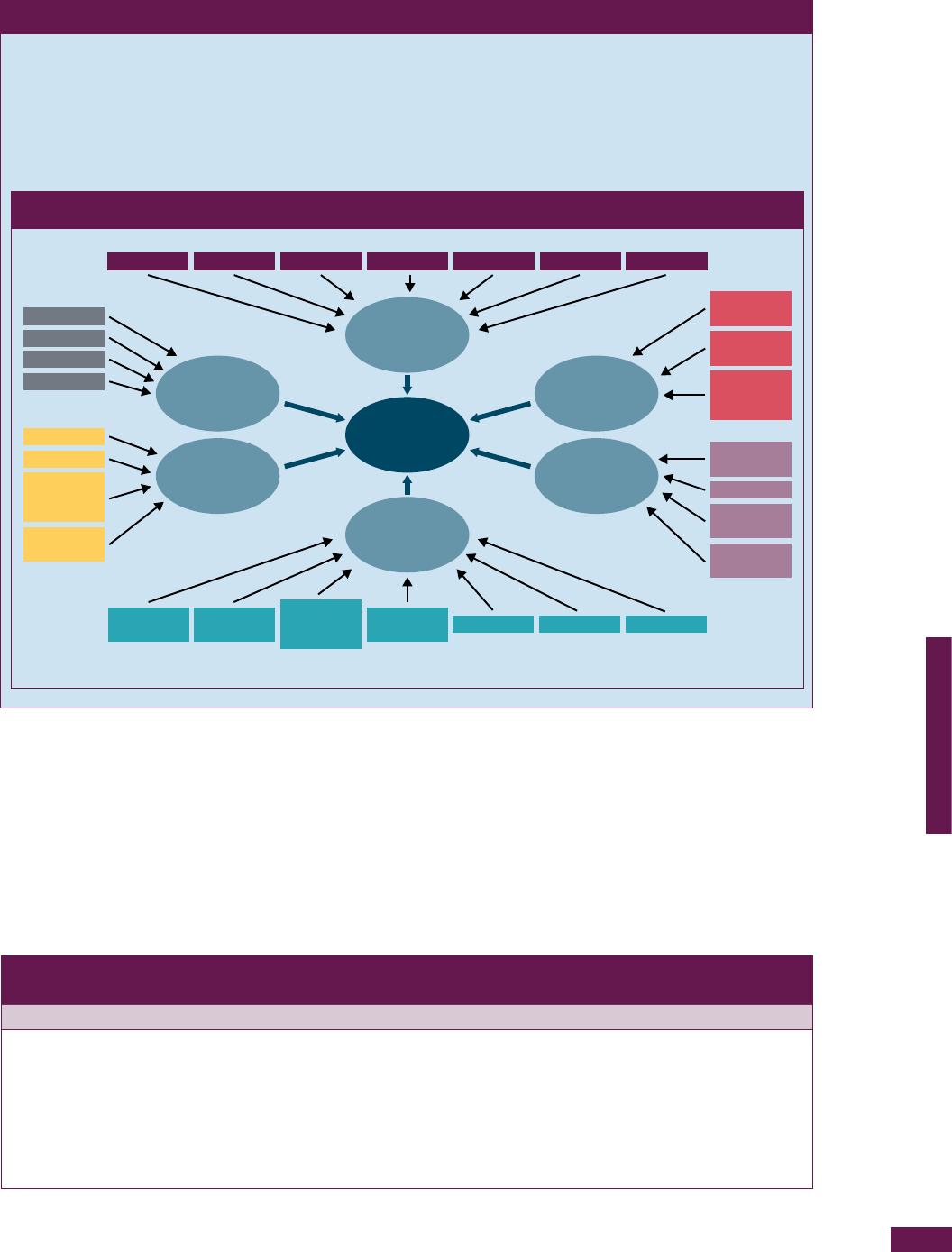
105
D. TRADE OBSTACLES
TO SMEs’ PARTICIPATION
IN TRADE
LEVELLING THE TRADING FIELD FOR SMES
facilitation measures (better infrastructure, reduced
time to export and timely delivery) tend to specialize
in supply chains. In fact, institutional environment and
trade facilitation matter more than capital and labour in
determining exports within supply chains. As discussed
above, poor transport and logistic infrastructure makes
it particularly hard for SMEs to participate in GVCs.
Trade policy is a strategic area for ensuring the
success of SMEs within GVCs. Low import tariffs, the
im plement ation of trade facilit ation a nd the enfo rc ement
of property rights are key to GVCs’ participation in
GVCs. Since SMEs, especially those from developing
countries, often operate in the low value-added
segment of the production chain, trade restrictions
(especially if additive) are disproportionately applied to
them, because they represent a larger percentage of
the value of the output. By the same token, the barriers
to export identified above are also obstacles to the
participation of SMEs in GVCs.
Box D.5: Factors affecting SME participation in GVCs
In the context of a study project to outline the main drivers of SMEs integration into GVCs, in 2014-15 the Asian
Development Bank (ADB) and the Asian Development Bank Institute (ADBI) launched a survey of enterprises
in four Asian developing economies (Kazakhstan, Papua New Guinea, the Philippines and Sri Lanka) (see
Arudchelvan and Wignaraja, 2015). The results are summarized in Figure D.10, which shows that a long series of
factors drive the participation of SMEs in GVCs, which mainly relate to capability, competitiveness, international
business facilitation and macro-economic policies and conditions.
Figure D.10: Factors affecting SME participation in GVCs
Standards Low costs Logistics
Firm management
Owner's capacity
Support
Networking
Specialization Flexibility InnovationQuality
Governance
Skilled labour
Training
Location
Access
to finance
Access
to insurance
Business
development
service
Education
Ambition
Readiness
for risk
Foreign
business
familiarity
Economic
conditions
Political
stability
Foreign
currency
exchange
Fair
competition
Regulations Tariffs Language
Firm
relationship
Technology
Business
association
Customer
relationship
Successful
participation
in GVCs
Environment
Product management
Source: Arudchelvan and Wignaraja (2015).
Table D.9: Firms’ top five perceived difficulties in bringing new suppliers from developing or
LDCs into their supply chain(s)
Agriculture ICT Textile Tourism
Inadequate airport, maritime or
transport capacity or links
Transportation costs and delays
Customs procedures
Export or import licensing
requirements
Irregular supply and/or or
inconsistent quality
Lack of transparency in
regulatory environment
Export or import licensing
requirements
Inadequate telecommunications
networks
Customs procedures
Import duties
Customs procedures
Export or import licensing
requirements
Inability of suppliers to meet order
delivery times
Border procedures
Shipping costs and delays
Access of suppliers to finance
Business environment
Insecurity
Inadequate sanitary or quality
controls of local food suppliers
Visa regimes for foreign tourists
Notes: Question: “What are the most typical difficulties that you face in bringing new suppliers from developing or LDCs into your supply chain(s)?
Please select up to 5 from the following list.”

WORLD TRADE REPORT 2016
106
Protection of IPR is important because it is one factor
that increases the attractiveness of a market for
franchising arrangements. Franchisors typically contact
local services for marketing and selling products.
Hairdressers, management consulting and real estate
are just some examples where franchises are common
in services. Car dealers operating for a carmaker or
a gas/oil stations operating for an oil company are
examples within the manufacturing sector. Franchises
are important channels in which SMEs can participate
in international markets. They provide market solutions
for some barriers that SMEs face when entering foreign
markets, such as access to supplier networks and
access to finance and know-how. But a franchiser’s
main asset is its brand. This needs to be adequately
protected for the franchiser to be of interest in an
arrangement with a local supplier (Nordås, 2015).
Finally, one additional obstacle to the participation
of SMEs, especially from developing countries, in
GVCs that is worth mentioning is the difficulty for
multinational enterprises of locating SME suppliers.
This is particularly difficult in developing countries
where SMEs often operate in the informal sector. The
process of identifying suppliers involves specific local
knowledge that may not be easily available to foreign
firms. There is evidence that FDI affiliates with joint
domestic and foreign ownership face lower costs than
wholly foreign-owned firms in identifying local suppliers
(Javorcik and Spatareanu, 2008). SME participation
in GVCs could be facilitated by the provision of such
information. Both business associations and specific
government agencies could be of assistance with this.
6. Conclusions
Obstacles to trade are particularly burdensome for SMEs.
Evidence suggests that a lack of information about foreign
distribution networks, border regulations and standards
represent the main obstacles to trade for SMEs.
Unexpectedly, SMEs also perceive high tariffs as a
more significant obstacle to trade than large firms. This
section has shown two reasons why this may be true.
First, SMEs’ trade flows are more sensitive (elastic) to
tariff changes. Second, SMEs appear to be relatively
more concentrated in sectors facing higher tariff
barriers than large firms.
Non-tariff barriers are also particularly burdensome for
SMEs. Large firms can more easily adapt to new costly
requirements, but small firms are driven out of business
if a new restrictive standard is introduced into a market.
Lack of transparency and differences in standards
across markets and costly certification procedures are
also major hurdles for SMEs.
Finally, cumbersome customs procedures stop SMEs
from exporting. Trade facilitation, while fostering trade
for both large and small firms, particularly boosts the
entry into the export market of small firms that would
otherwise only sell in the domestic market. The Trade
Facilitation Agreement has been shown to remove
a major obstacle to trade for SMEs, that of lack of
information on rules and regulation in the foreign
market.
E-commerce and GVC participation are two ways by
which SMEs can partially overcome these barriers and
improve their participation in global trade. E-commerce
allows SMEs to match with their customers at much
lower costs. GVCs give SMEs a way to access foreign
distribution networks and exploit some economies of
scale they could not otherwise access. Yet, SMEs face
specific obstacles in exploiting these opportunities.
Problems related to the logistics of shipping a good or
delivering a service, ICT security, data protection and
payment-related problems are major issues SMEs face
with regard to web sales. Logistics and infrastructure
costs, regulatory uncertainty and access to skilled
labour are among the major challenges for SMEs
wishing to join production networks.

107
D. TRADE OBSTACLES
TO SMEs’ PARTICIPATION
IN TRADE
LEVELLING THE TRADING FIELD FOR SMES
Endnotes
1 SMEs’ challenges to access international market include
a poor business environment, poor labour skills, a lack
of bargaining power, restricted access to market data,
difficulties in accessing technology and limited access to
finance beyond high trade costs (see WTO document WT/
COMTD/AFT/W/53).
2 See Leonidou (2004) and Narayanan (2015).
3 The ITC Business Surveys on NTMs are available at http://
ntmsurvey.intracen.org/publications/itc-series-on-ntms
4 Detailed results are available in Appendix Figures D.1, D.2
and D.3.
5 Results from the questionnaire completed by firms in OECD
countries are available in Appendix Figures D.4, D.5, D.6 and
D.7.
6 Only three sectors are reported in Table D.2 and in Appendix
Figures D.1-3 because there is no equivalent question on
trade barriers to enter and move up the value chain for
tourism and transport services.
7 CBI is the Centre for the Promotion of Imports from
developing countries, an agency of the Ministry of Foreign
Affairs of the Netherlands.
8 The “Unable to find foreign partners” category implies
that a firm lacks the resources and business networks to
find a reliable local representative, business partner, or
distribution agent in the foreign market, whilst the “Difficulty
in receiving or processing” category includes foreign law
and enforcement practices that do not adequately ensure
payment for delivered goods and services. The “Obtaining
finance” category, on the other hand, implies difficulties in
securing trade finance, particularly pre-shipment financing
to cover large exports, and in obtaining working capital for
daily operations and expansion into new business areas.
9 Traditional economic theory predicts an identical effect
of a tariff increase (decrease) on the volume of export for
small and large firms (Melitz, 2003). An increase in tariffs
decreases the total value of exports (across all firms). At the
firm level, on the one hand higher tariffs will tend to reduce
exports. On the other hand, the exit of small firms from the
export market will lower competition and increases export of
firms staying in the market. The effect on the average value
of export per firm is ambiguous, but equal across firms of
different size.
10 Other works that study firm-level responses to price shock
(rather than tariff changes) also find that firms change their
import/export behaviour depending on their size. Berman et
al. (2015b) and Gopinath and Neiman (2014) find that firm-
level elasticity depends negatively on the size of the firm.
Berman et al. (2015a) explain the heterogeneous effect
by firm size, showing that large firms absorb part of the
shock by reducing price mark-ups rather than the volumes
of trade. Gopinath and Neiman (2014) explain the reduced
responsiveness of large firms trade to price shocks by
showing that large firms reduce but do not stop importing
intermediate inputs. Therefore, firms of different sizes
experience a different change in unit costs.
11 Also see Feenstra and Weinstein (2010).
12 Levy (1994) makes a similar argument for export-oriented
sectors in a set-up where export subsidies are prohibited.
13 This perception is confirmed by the evidence. On average,
NTMs almost double the overall level of trade restrictiveness
imposed by tariffs, thus meaning that they are on average
as important as tariffs. In several countries, though,
the contribution of NTMs to the overall level of trade
restrictiveness is actually higher than that of tariffs (WTO,
2012).
14 Fixed costs are independent of the amount produced or
exported, while variable costs increase with the level of
production or exports.
15 Analysing firms export decisions from 42 developing
countries in response to pesticide standards in 63 importing
countries, Fernandes et al. (2015) show that restrictive
importing countries’ standards deter firms, especially small
firms, from entering new markets.
16 Mode 4 of the General Agreement on Trade in Services
(GATS) only covers the temporary presence of foreign
natural persons to supply services.
17 The OECD STRI covers 42 countries (OCED members
plus Brazil, China, India, Indonesia, Latvia and the Russian
Federation), while the World Bank STRI comprises 102
economies (24 OECD countries and 78 developing and
transition economies).
18 It is quite reasonable to discard mode 2, as, with the
exception of education and health services, there are, in
practice, very few restrictions to this mode of supply.
19 Although focused only on tourist visas, the World Tourism
Organization’s 2015 “Visa Openness Report” (UNWTO,
2015) notes that 89 per cent of country pairs do not request
a visa of each other’s nationals if the countries involved
are both advanced economies. By contrast, this share
drops to 21 per cent for relationships between emerging
and advanced countries and to a mere 10 per cent if both
countries are emerging economies.
20 See http://web.alt.uni-miskolc.hu/als/cikkek/2010/ALS4_
p130_136_Urbanska.pdf
21 Some large, well-established 3PL providers (e.g. FedEx,
UPS, DHL) have launched small business logistics solutions
which may provide export assistance to SMEs.
22 Ecommerce Europe is an association representing 25,000+
companies selling products and/or services online to
consumers in the European Union.
23 There is evidence that there are productivity gains
associated with supply chains. Javorcik (2004) finds
productivity gains for Lithuanian firms that provide inputs
to foreign multinationals. Newman et al. (2015) provide
evidence of productivity gains both for firms that provide
inputs to, and firms that source inputs from, foreign firms
located in Viet Nam. Piermartini and Rubínová (2014) show
that supply chains can work as a channel for knowledge
transfers, but the scope of spillovers depends on the
type of relationship between the knowledge exporter and
knowledge importer in the supply chain.
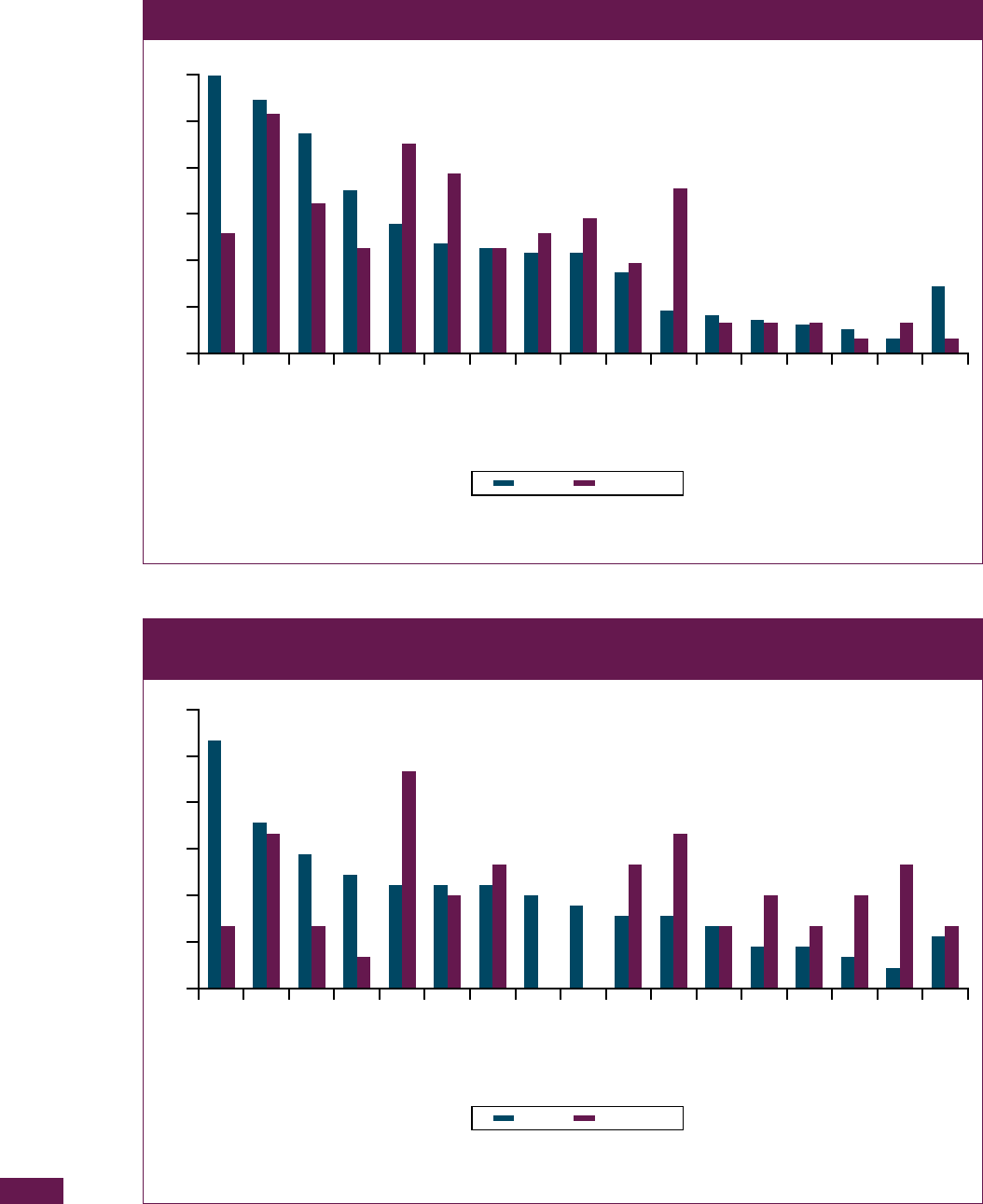
WORLD TRADE REPORT 2016
108
Appendix Figure D.1: Difficulties in entering, establishing or moving up agrifood value chains
0%
10%
20%
30%
40%
50%
60%
Access to
business finance
Certification costs
Transportation costs
Access to trade finance
Customs paperwork
and delays
Supply chain governance
Lack of transparency
in regulation
Informal controls
and corruption
Lack of transport
capacity
Import licensing
or quotas
Seasonal restrictions
Lack of
telecommunication
Plant pests
Access to livestock
genetics
Inadequate airport
capacity or links
Animal diseases
Other
SMEs Large firms
Note: Question No. 15 in the Fourth Global Review of Aid for Trade (OECD and WTO, 2013) survey: “What difficulties do you face in entering,
establishing or moving up agrifood value chains? Please select up to 5 from the following list.”.
Appendix Figure D.2: Difficulties in entering, establishing or moving up information and
communications technology value chains
0%
10%
20%
30%
40%
50%
60%
Access to
trade finance
Lack of internet infrastructure
Lack of transparency
in regulation
Lack of telecommunication
Customs paperwork or delays
Supply chain governance
Lack of power infrastructure
Restrictions on foreign
direct investment
Restrictions on
service providers
Commercial presence
requirement
Local requirements in
public procurement
Import duties
Lack of transport
infrastructure
Other border agency
paperwork or delays
Logistics and shipping
costs and delays
Export or import licensing
requirements
Other
SMEs Large firms
Note: Question No. 35 in the Fourth Global Review of Aid for Trade (OECD and WTO, 2013) survey: “What difficulties do you face in entering,
establishing or moving up ICT value chains? Please select up to 5 from the following list.”
Appendix Figures
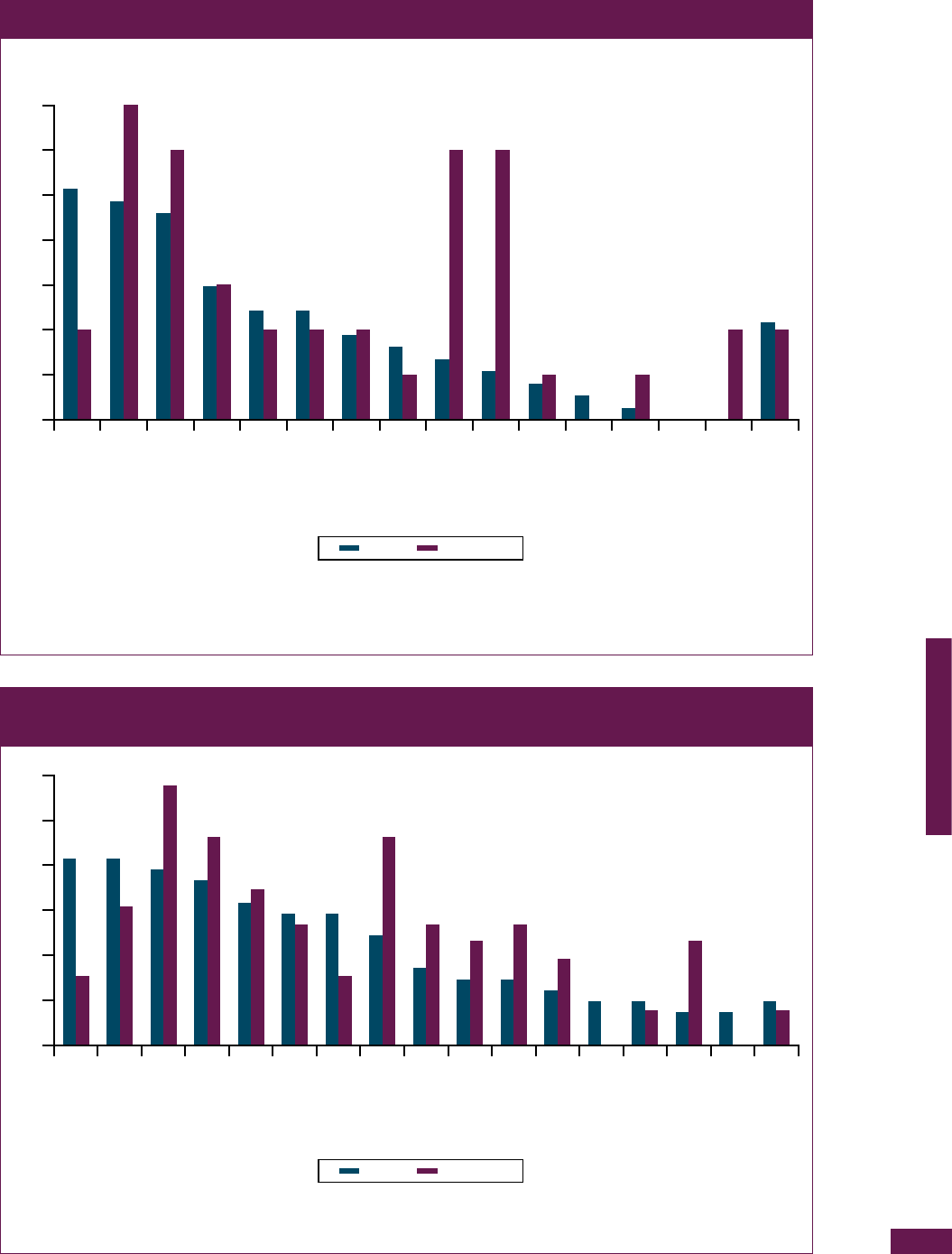
109
D. TRADE OBSTACLES
TO SMEs’ PARTICIPATION
IN TRADE
LEVELLING THE TRADING FIELD FOR SMES
Appendix Figure D.3: Difficulties in entering, establishing or moving up textiles and apparel value chains
0%
10%
20%
30%
40%
50%
60%
70%
Access to
trade finance
Shipping costs
and delays
Customs paperwork
or delays
Supply chain
governance
Border agency
paperwork or delays
Trade licensing
requirements
High import duties
Local content
requirements
Lack of transport
infrastructure
Restrictions on FDI
Lack of power
infrastructure
Commercial presence
requirement
Lack of internet
infrastructure
Visa restrictions
Lack of
telecommunication
Other
SMEs Large firms
Note: Question No. 56 in the Fourth Global Review of Aid for Trade (OECD and WTO, 2013) survey: “What difficulties do you face in entering,
establishing or moving up textiles and apparel value chains? Please select up to 5 from the following list.”
Appendix Figure D.4: Difficulties in bringing new suppliers from developing countries or LDCs
into supply chains – agriculture
0%
10%
20%
30%
40%
50%
60%
Transportation costs
and delays
Lack of transport
capacity
Trade licensing requirements
Customs procedures
Import duties
Irregular supply and
inconsistent quality
Cannot meet safety standards
Inability to meet
volume requirements
Absence of cold
chain capability
Other border
procedures
Cannot meet labour/
social standards
Lack of transparency
in regulation
Plant pests
Lack of
telecommunication
Animal diseases
Other
Cannot meet
environment standards
SMEs Large firms
Note: Question No. 22 in the Fourth Global Review of Aid for Trade (OECD and WTO, 2013) survey: “What are the most typical difficulties that
you face in bringing new suppliers from developing countries or LDCs into your supply chain(s)? Please select up to 5 from the following list.”
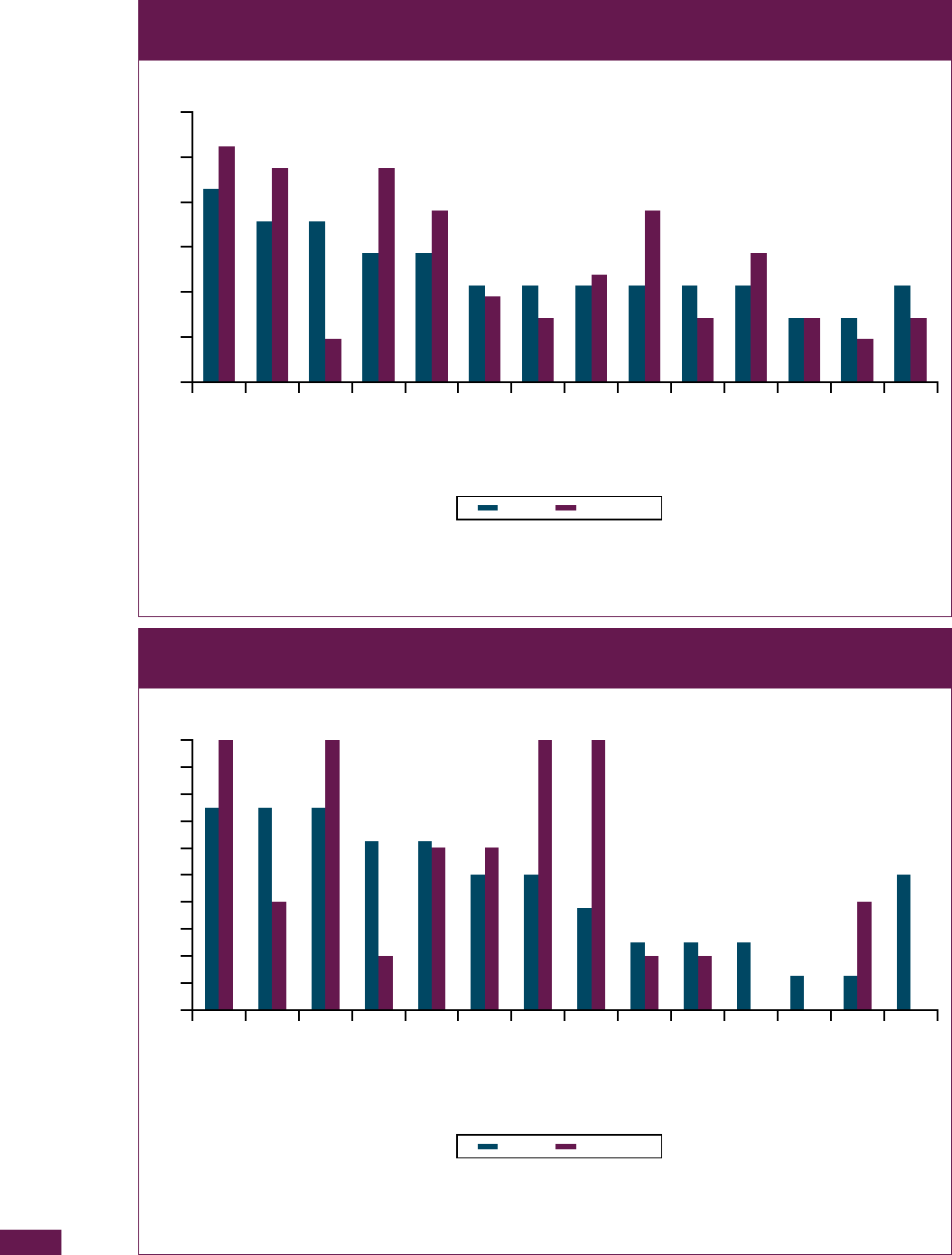
WORLD TRADE REPORT 2016
110
Appendix Figure D.5: Difficulties in bringing new suppliers from developing countries or LDCs
into supply chains – information and communications technology
0%
10%
20%
30%
40%
50%
60%
Lack of
transparency
in regulation
Trade licensing requirements
Lack of telecommunication
Customs procedures
Import duties
Other border procedures
Inability to meet labour/
social standards
Lack of
transport capacity
Irregular supply or
inconsistent quality
Visa restrictions
Restrictions on
service providers
Inability to meet
volume requirements
Inability to meet
environment standards
Other
SMEs Large firms
Note: Question No. 43 in the Fourth Global Review of Aid for Trade (OECD and WTO, 2013) survey: “What are the most typical difficulties that
you face in bringing new suppliers from developing or LDCs into your supply chain(s)? Please select up to 5 from the following list.”
Appendix Figure D.6: Difficulties in bringing new suppliers from developing countries or LDCs
into supply chains – textiles
0%
5%
10%
15%
20%
25%
30%
35%
40%
45%
50%
Customs
procedures
Trade licensing requirements
Inability to meet delivery time
Other border procedures
Shipping costs and delays
Import duties
Lack of transport
capacity
Inability to meet
volume/quality
Inability to meet
environment standards
Inability to meet labour/
social standards
Restrictions on
service providers
Lack of telecommunication
Lack of transparency
in regulation
Other
SMEs Large firms
Note: Question No. 63 in the Fourth Global Review of Aid for Trade (OECD and WTO, 2013) survey: “What are the most typical difficulties that
you face in bringing new suppliers from developing or LDCs into your supply chain(s)? Please select up to 5 from the following list.”
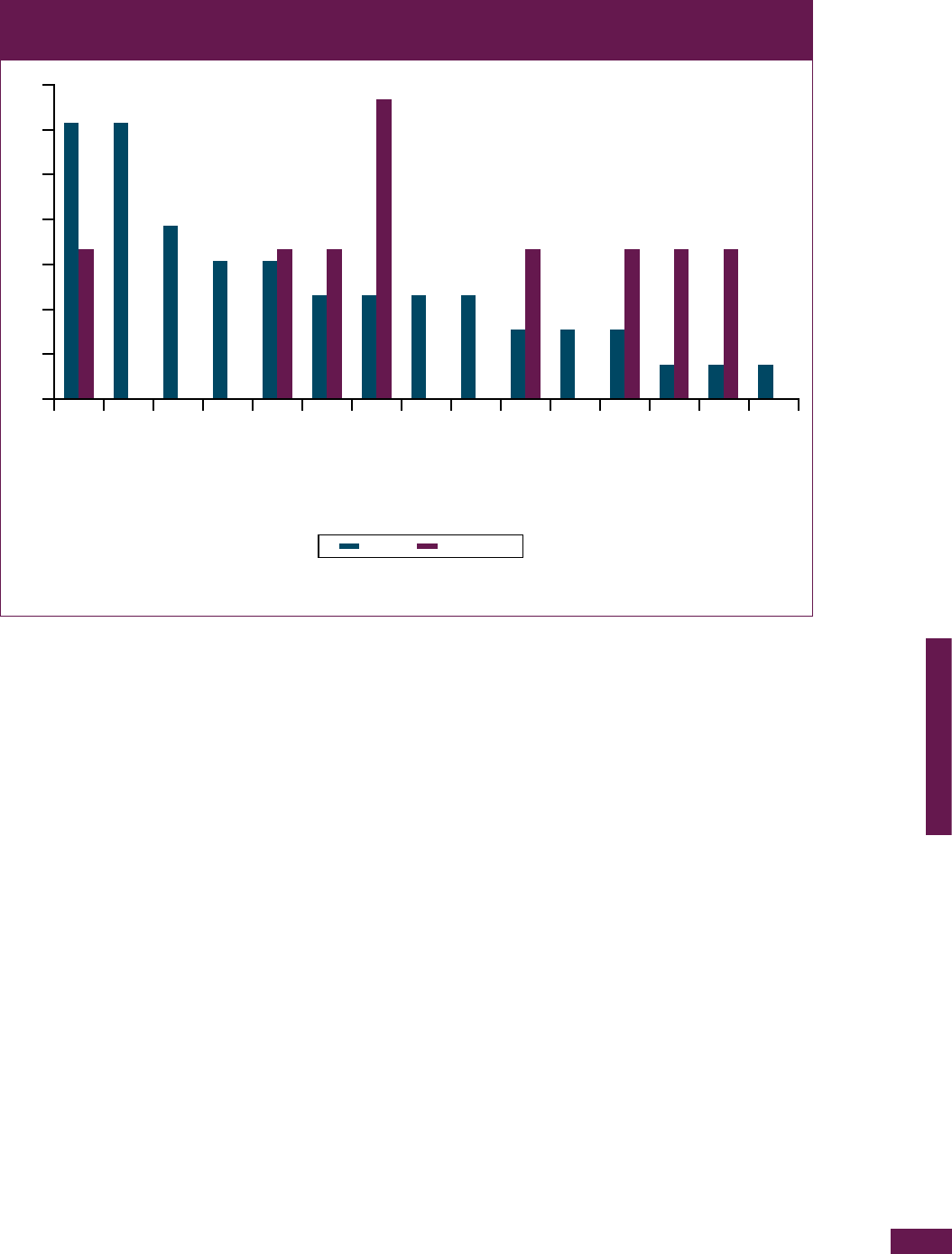
111
D. TRADE OBSTACLES
TO SMEs’ PARTICIPATION
IN TRADE
LEVELLING THE TRADING FIELD FOR SMES
Appendix Figure D.7: Difficulties in bringing new suppliers from developing countries or LDCs into
tourism product value chains
0%
10%
20%
30%
40%
50%
70%
60%
Access of
suppliers to finance
Insecurity
Business environment
Sanitary/quality controls
by local food suppliers
Visa regimes
for foreign tourists
Compliance with
international service norms
Compliance with
environmental standards
Restrictions on service
providers/tour operators
Supply chain governance
Compliance with
labour standards
Airport or port capacity
and infrastructure
Foreign direct
investment restrictions
Insurance premiums
Domestic licensing
requirements
Other
SMEs Large firms
Note: Question No. 84 in the Fourth Global Review of Aid for Trade (OECD and WTO, 2013) survey: “What are the most typical difficulties that
you face in bringing new suppliers from developing or LDCs into your tourism product value chain(s)? Please select up to 5 from the following list.”
